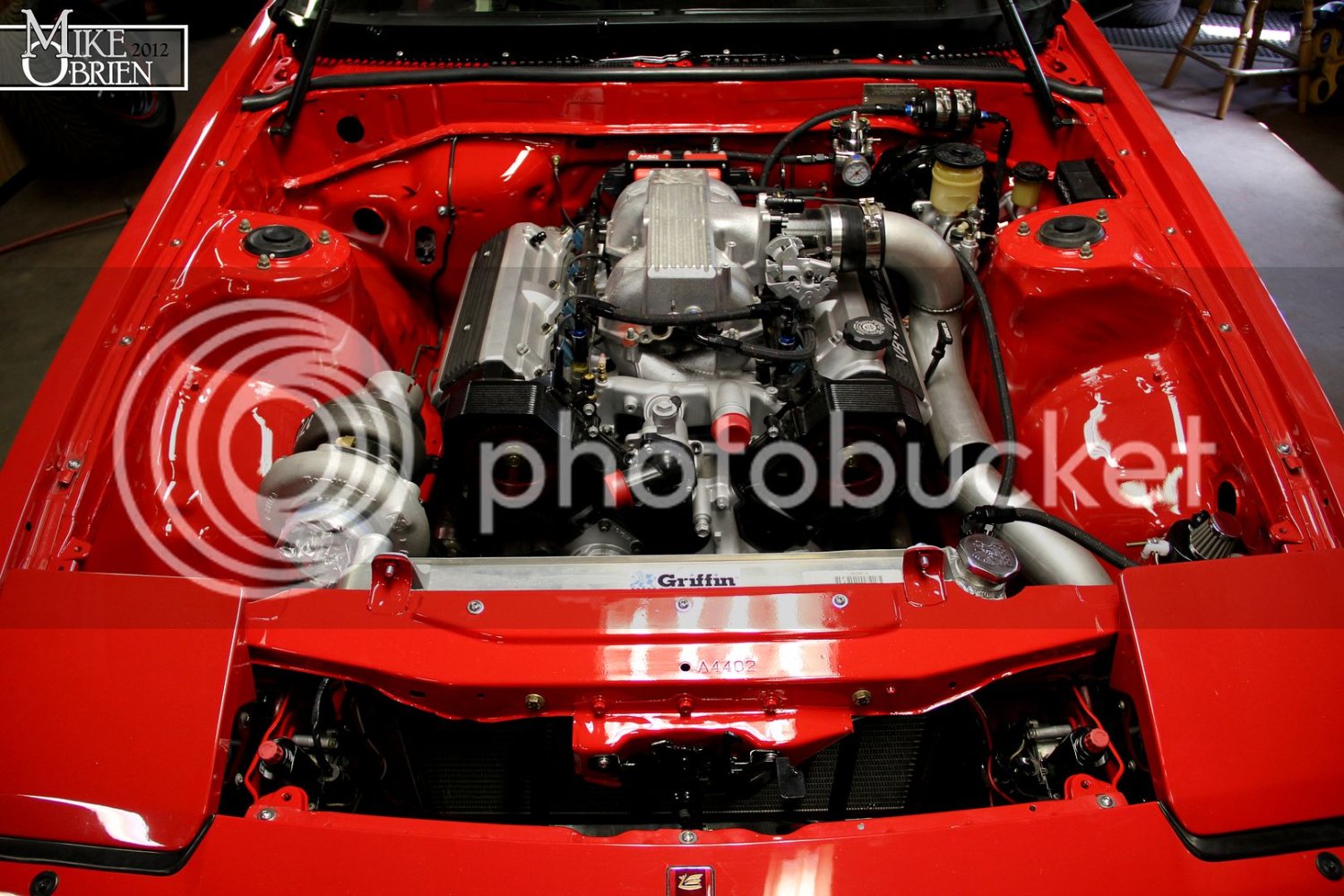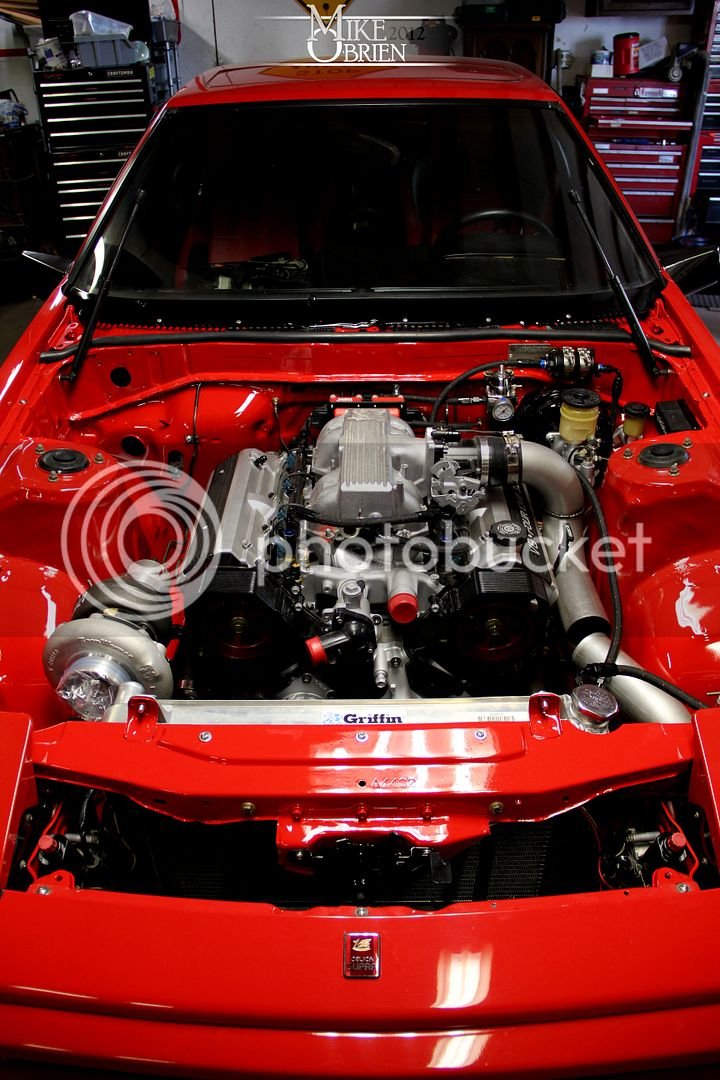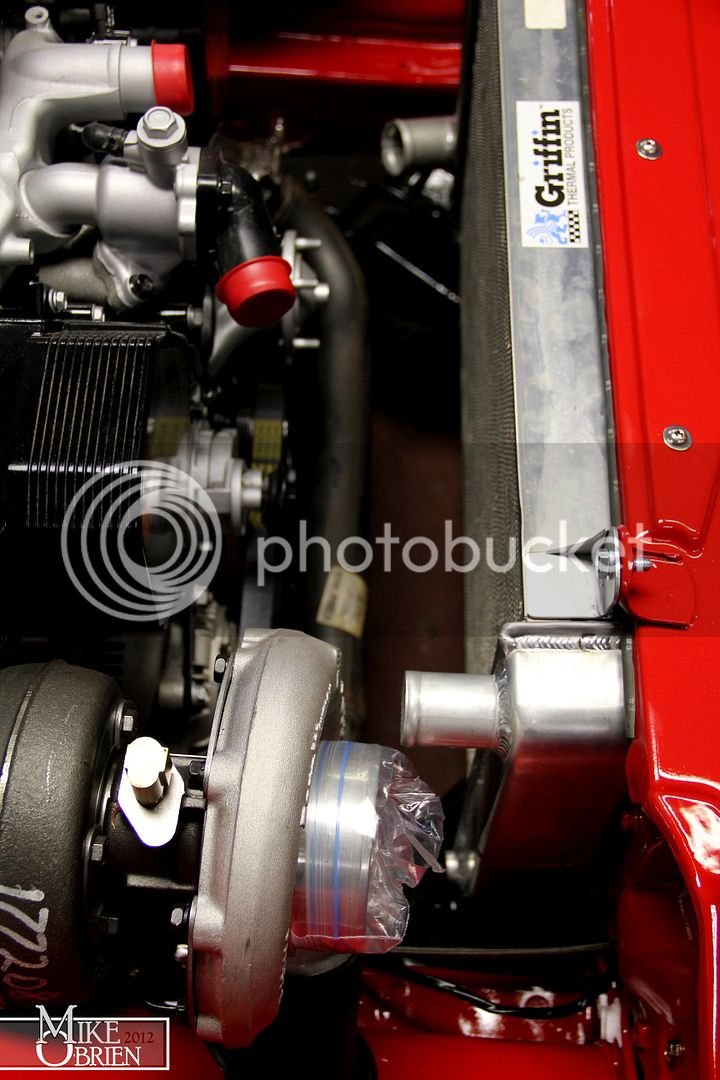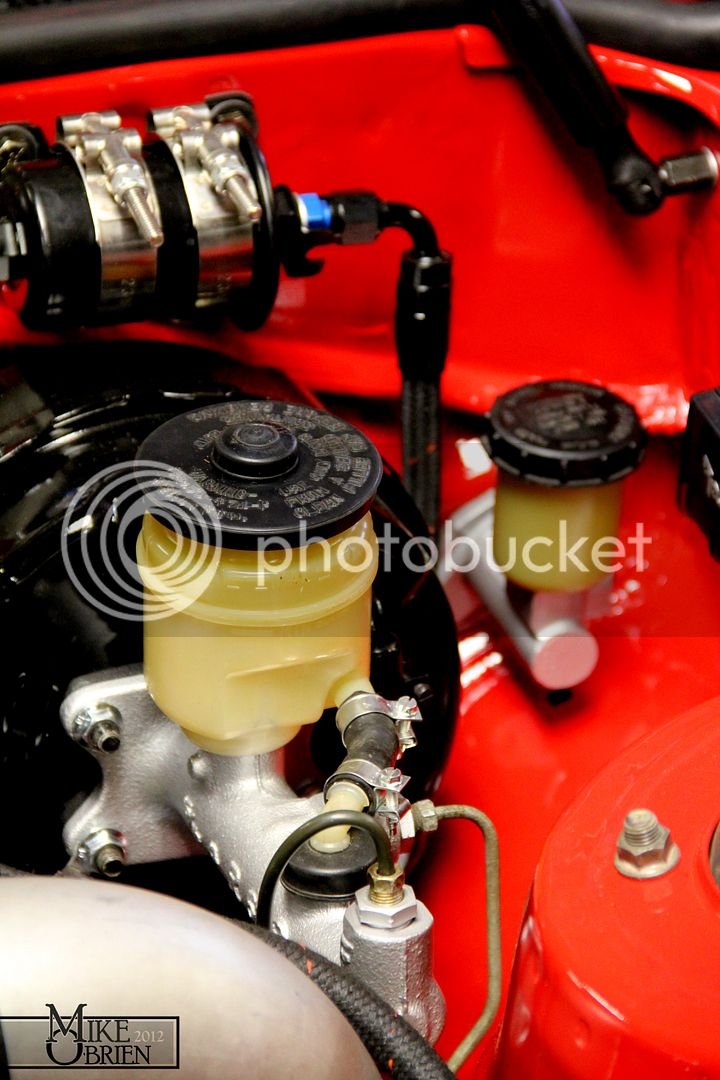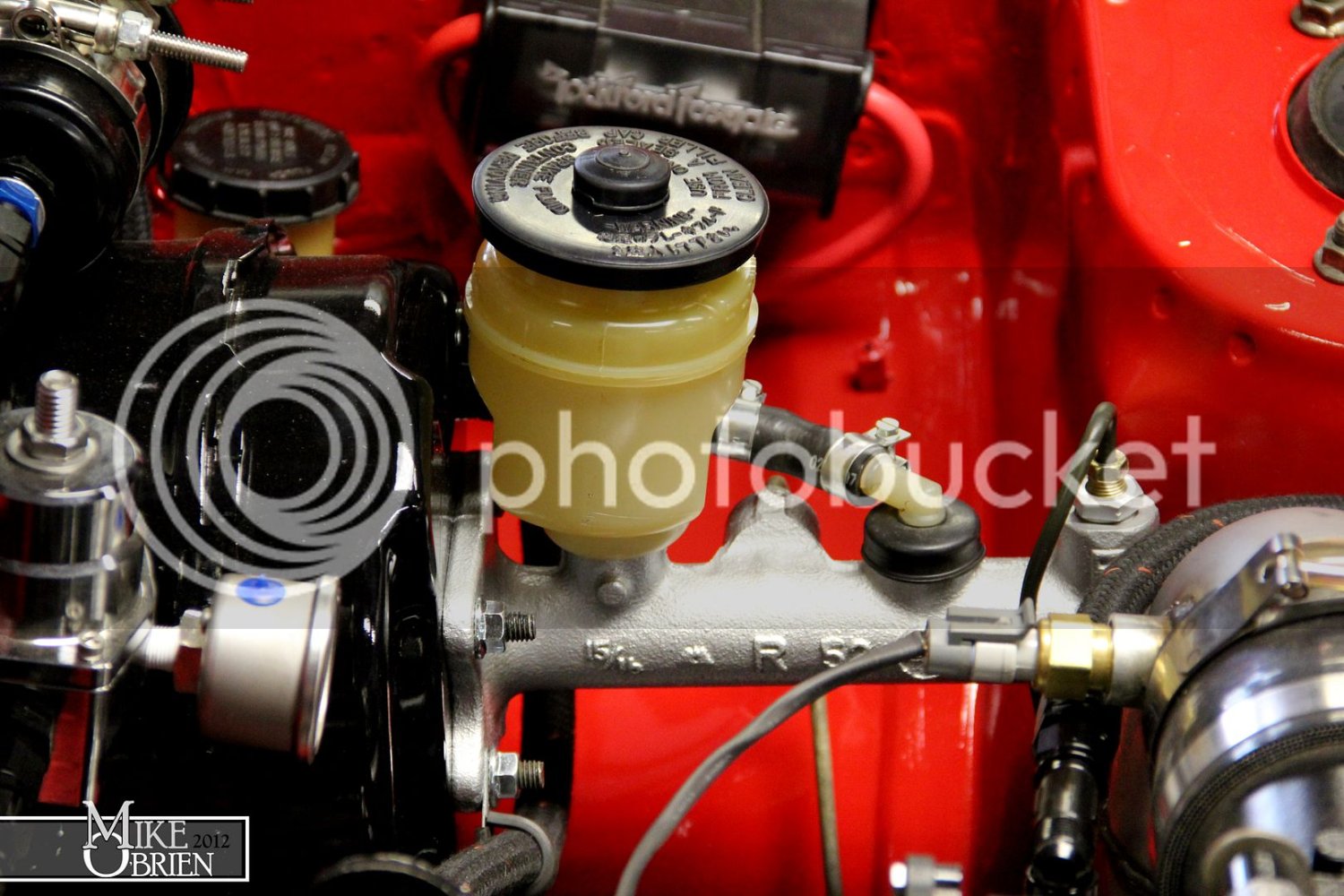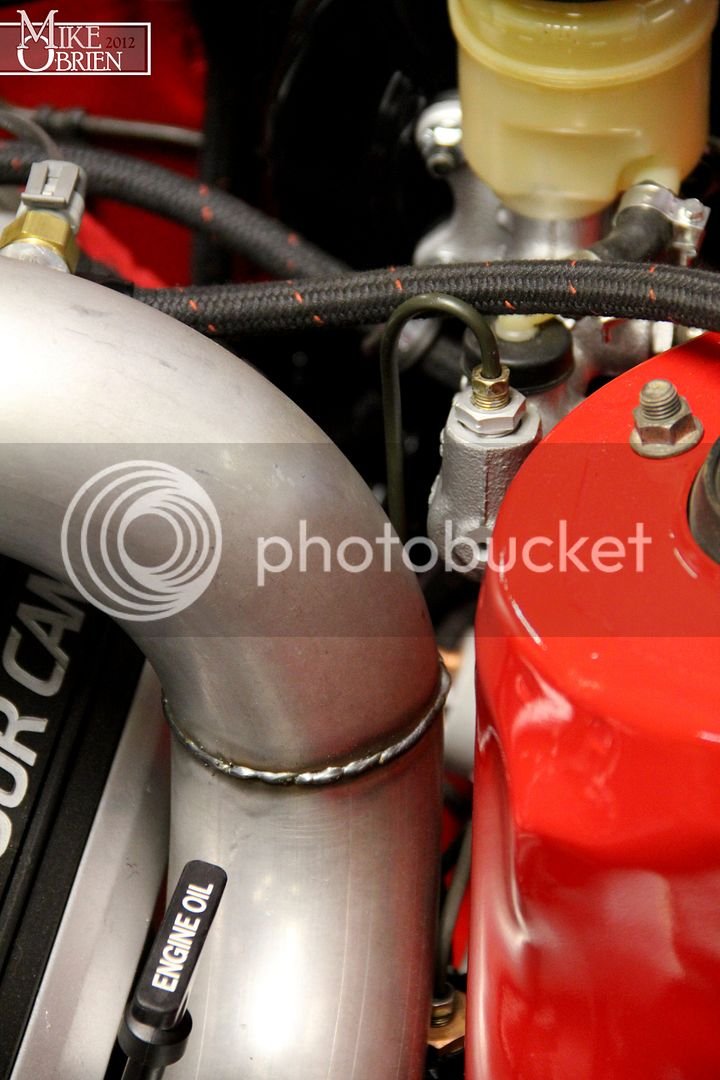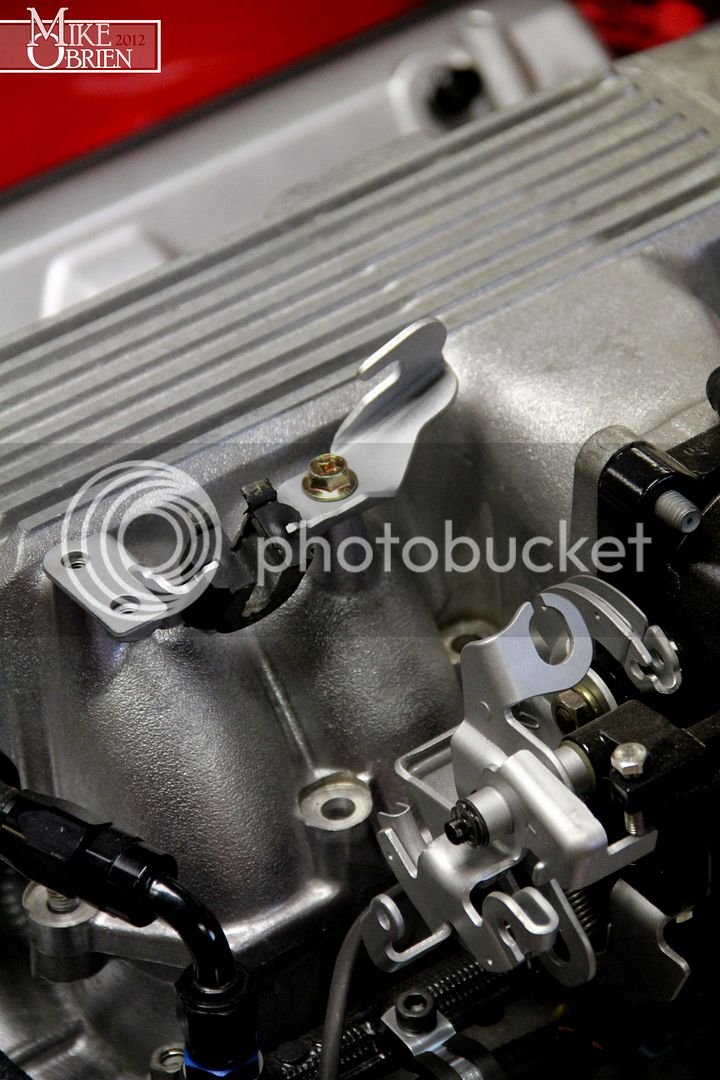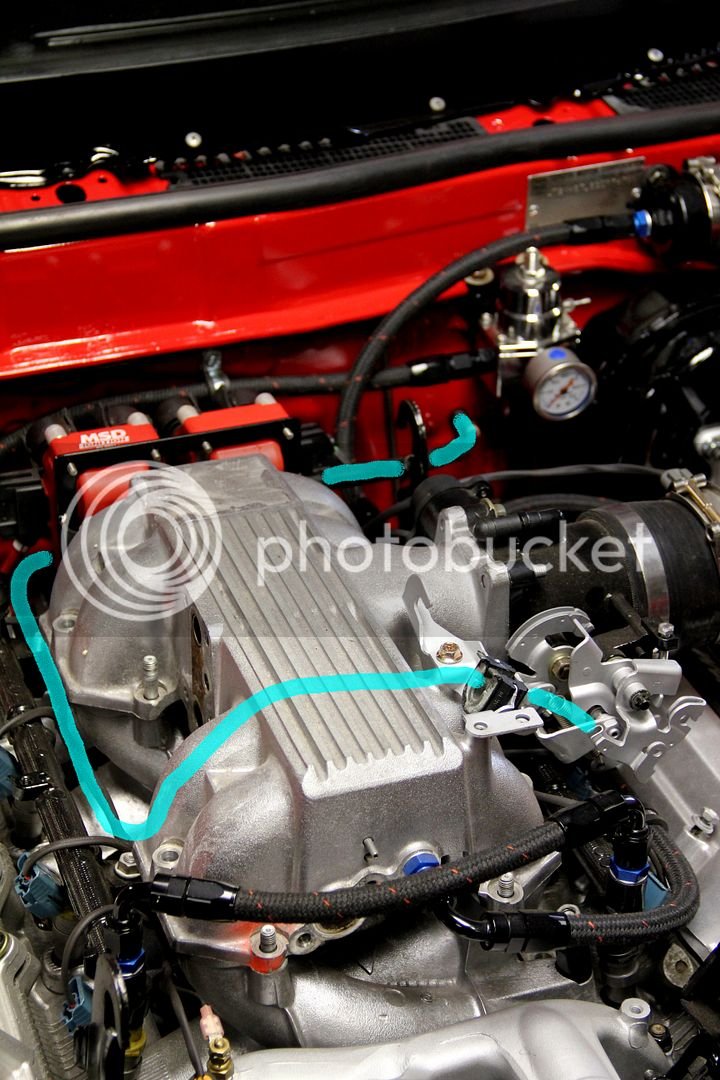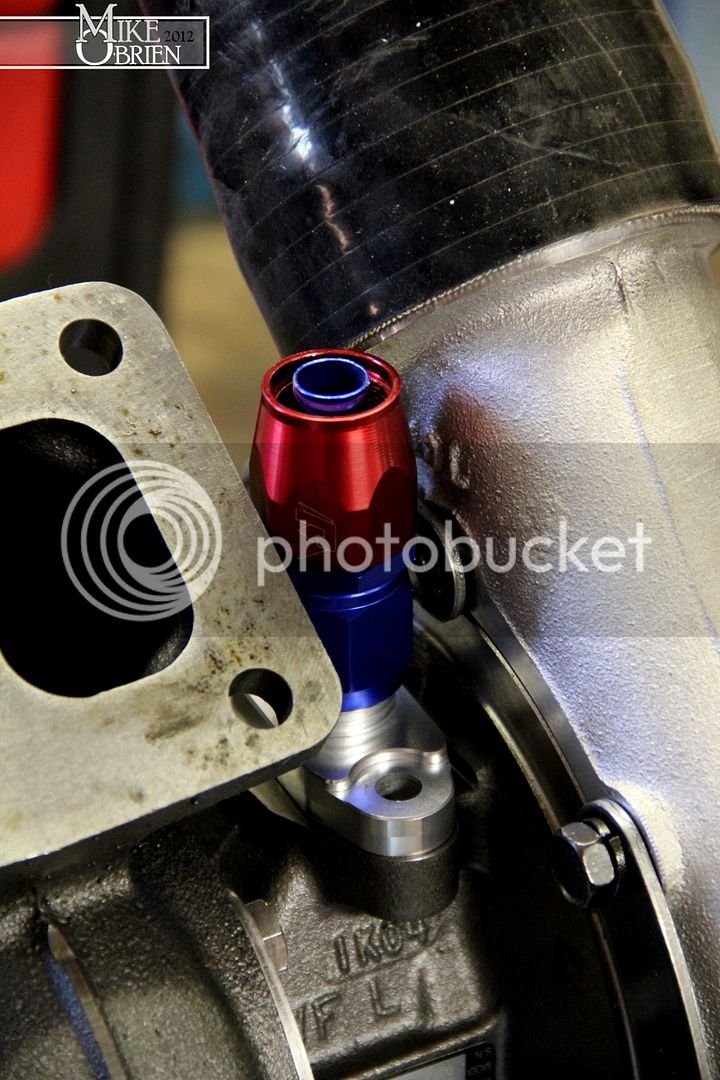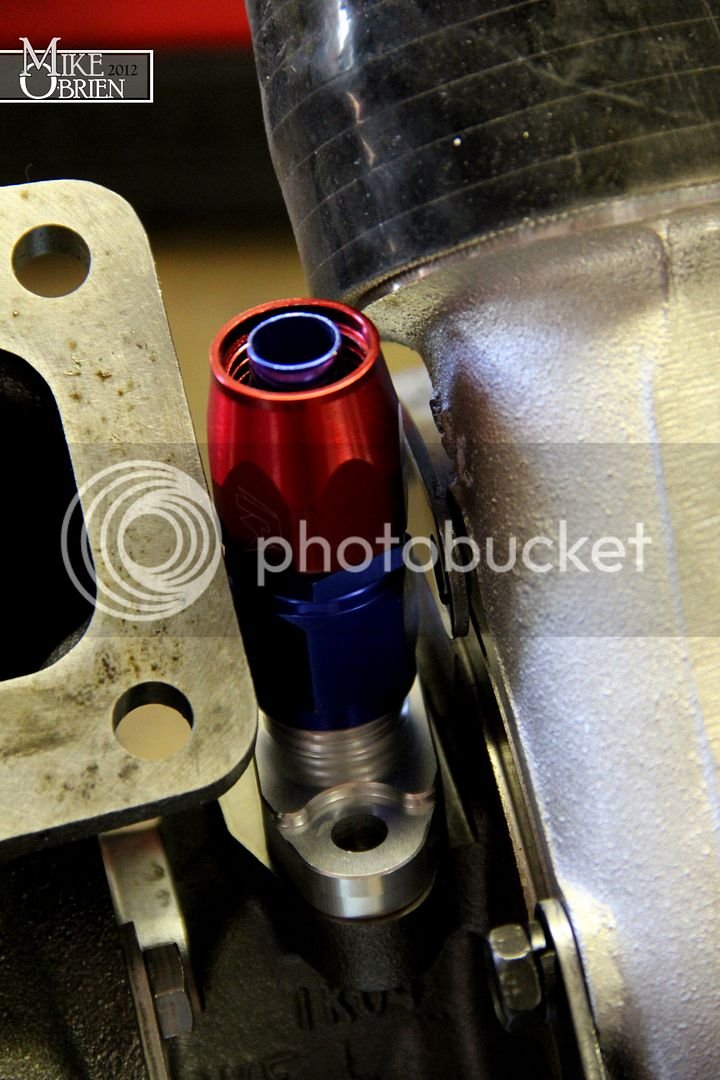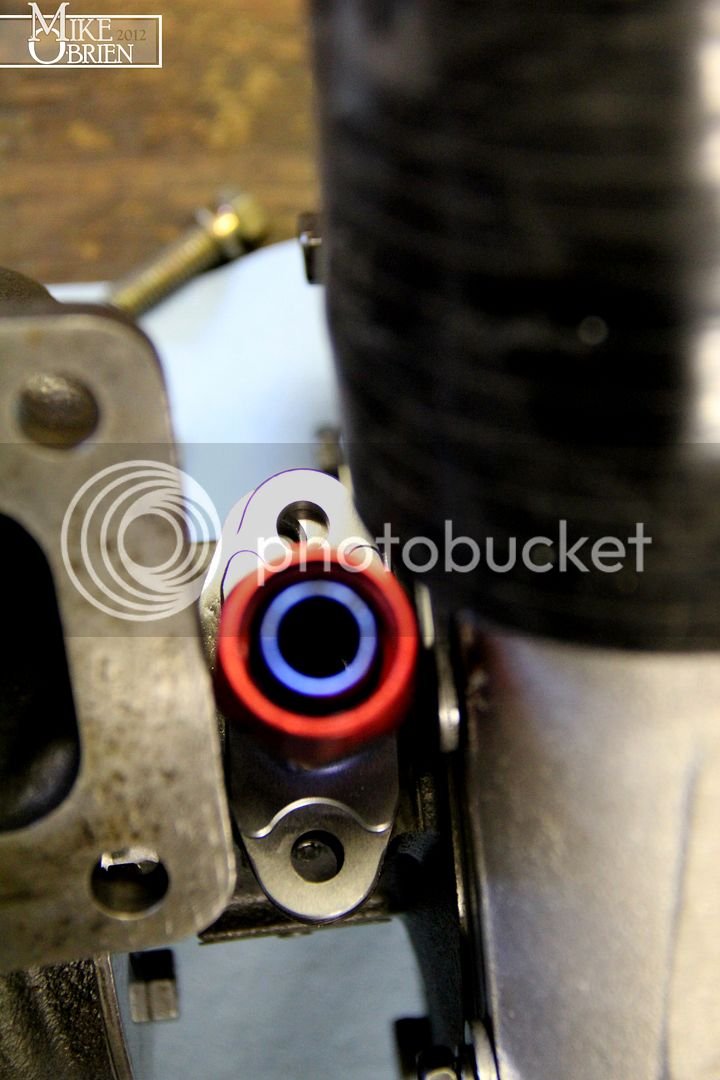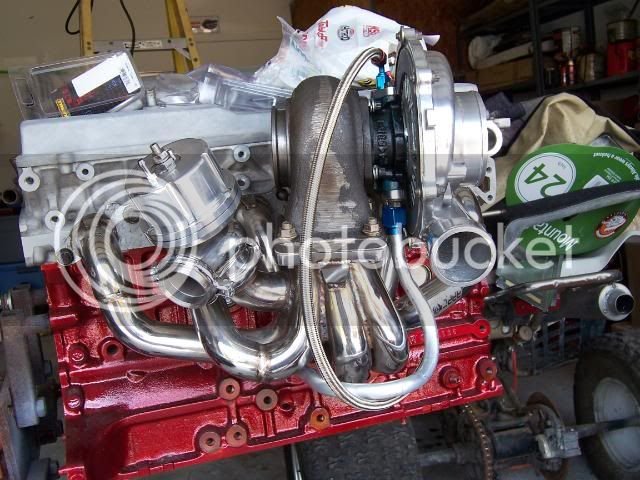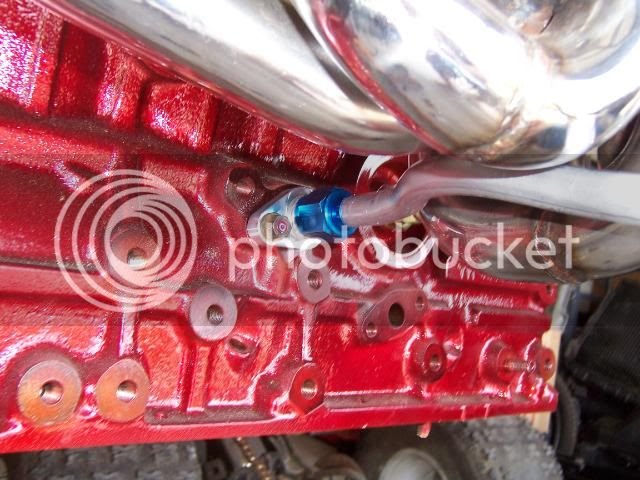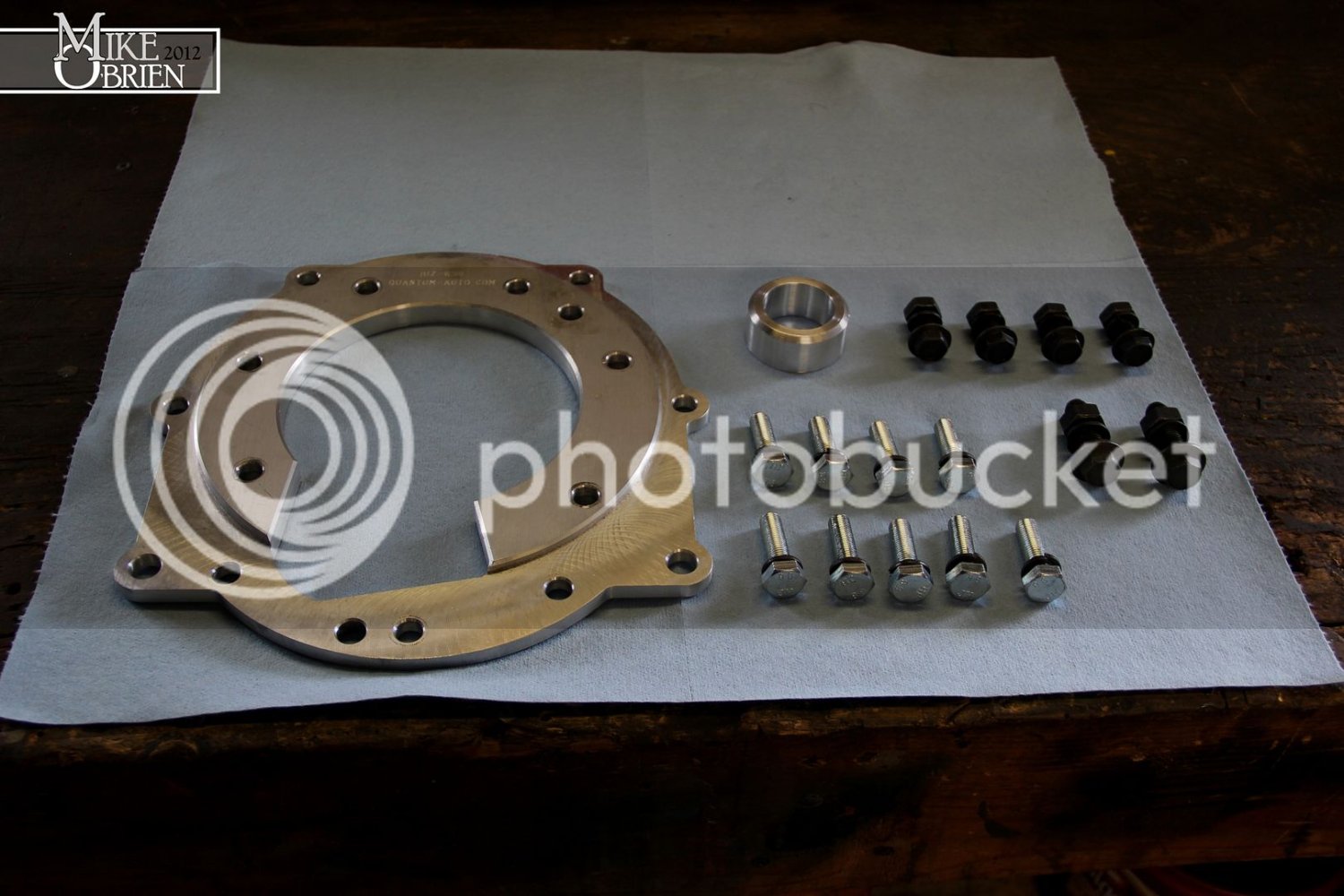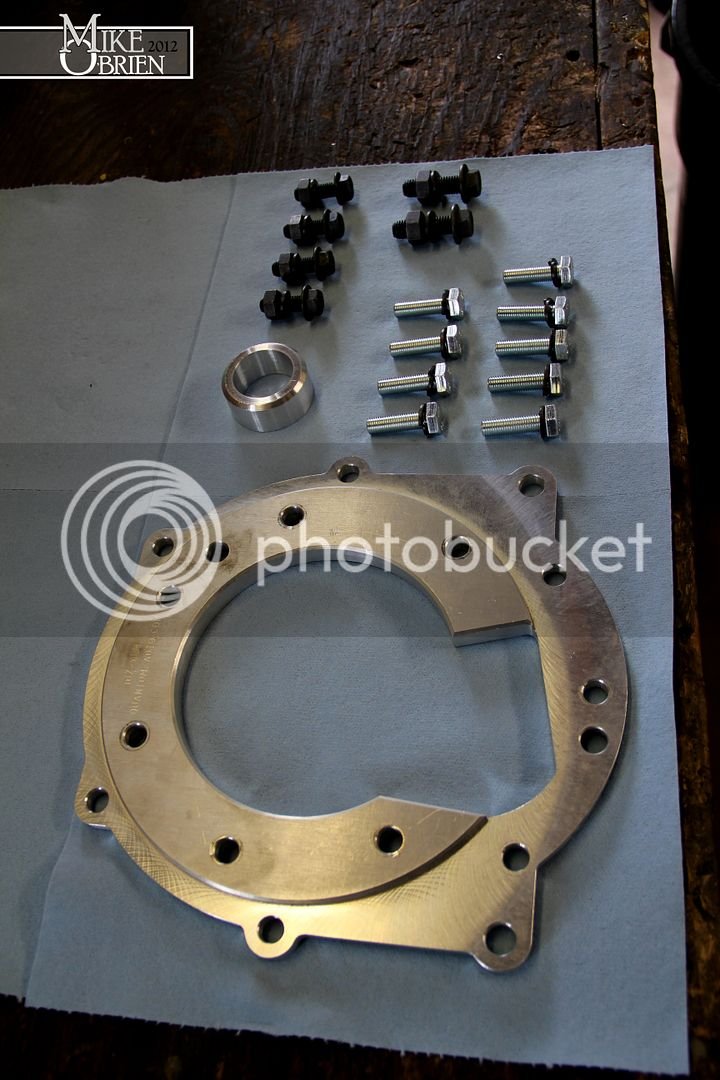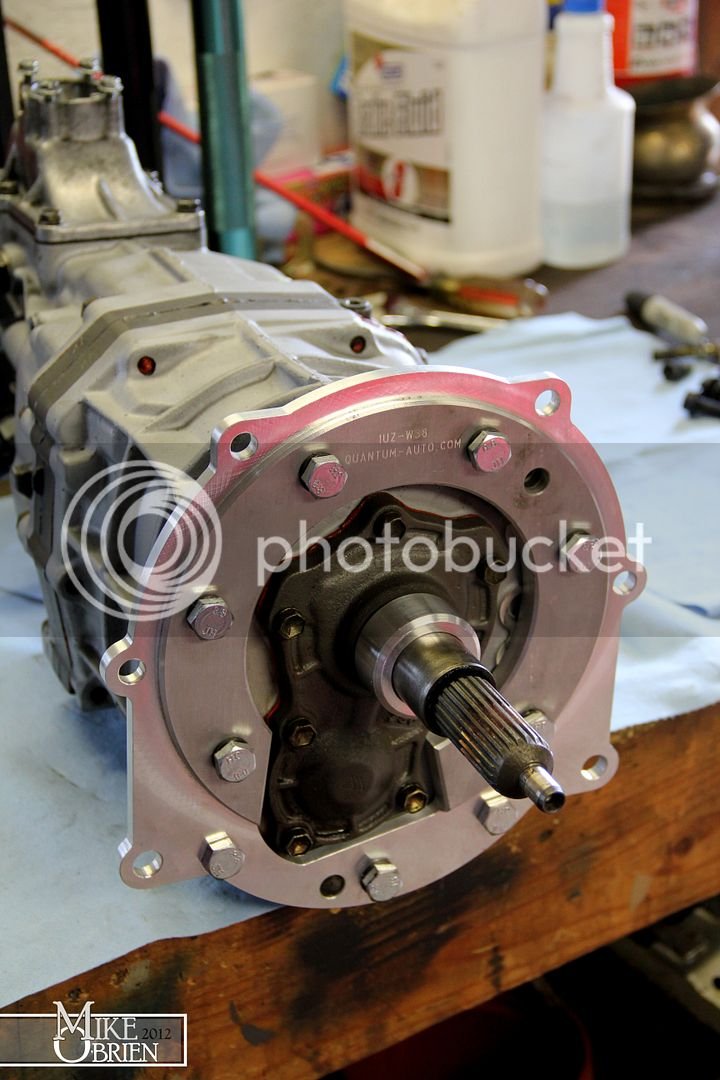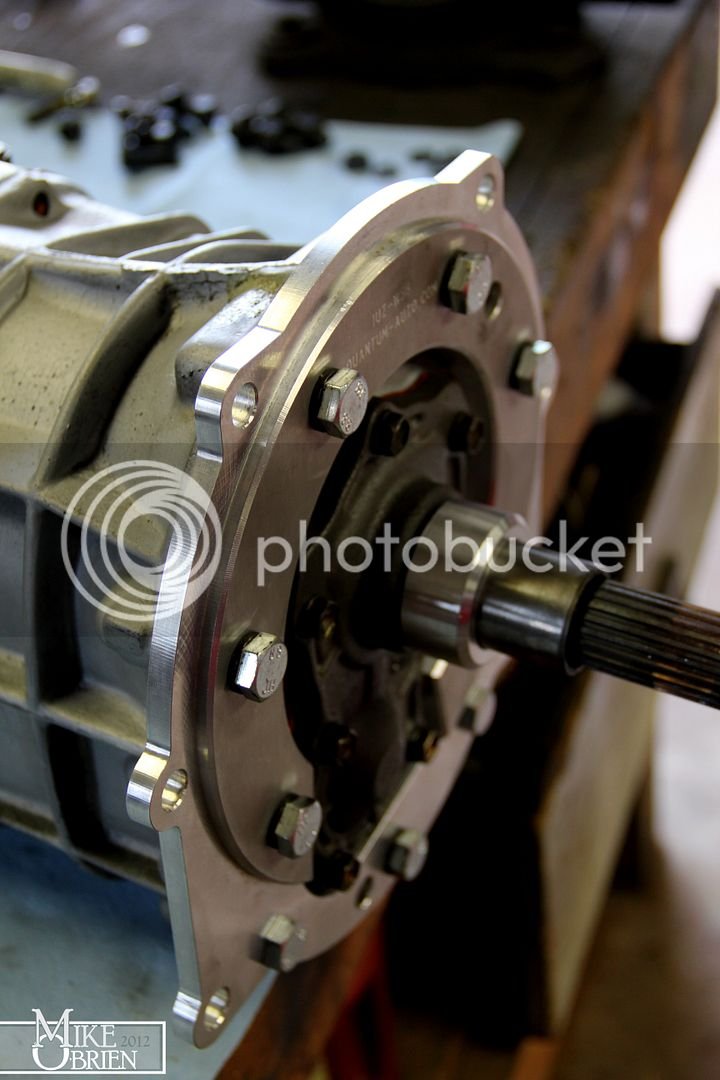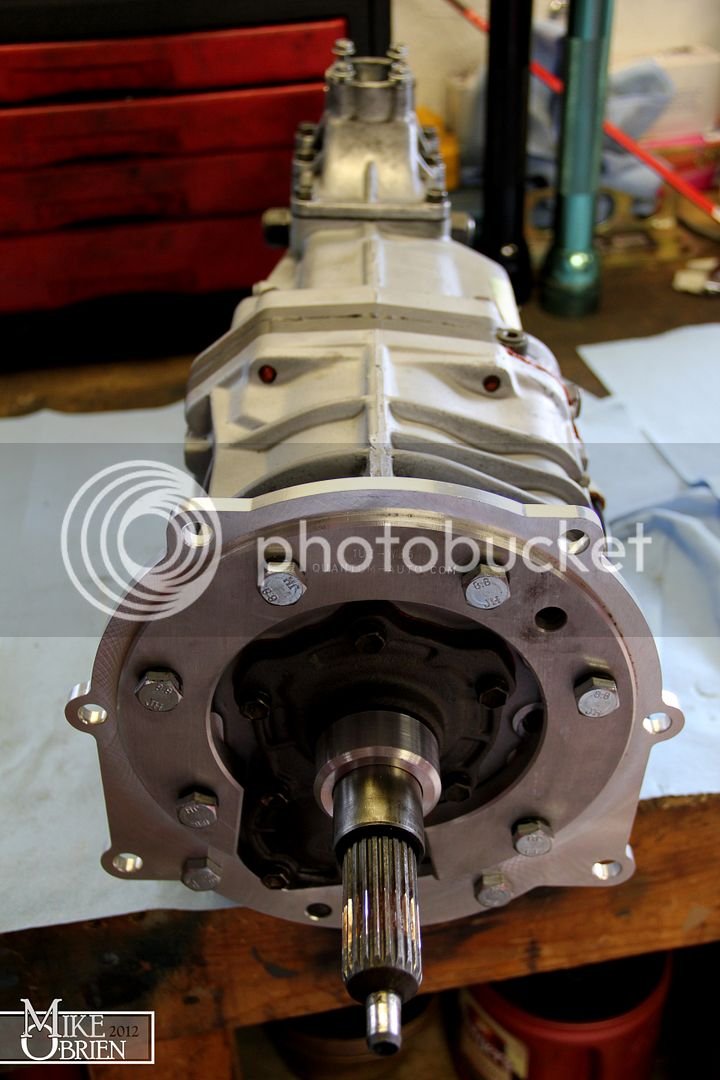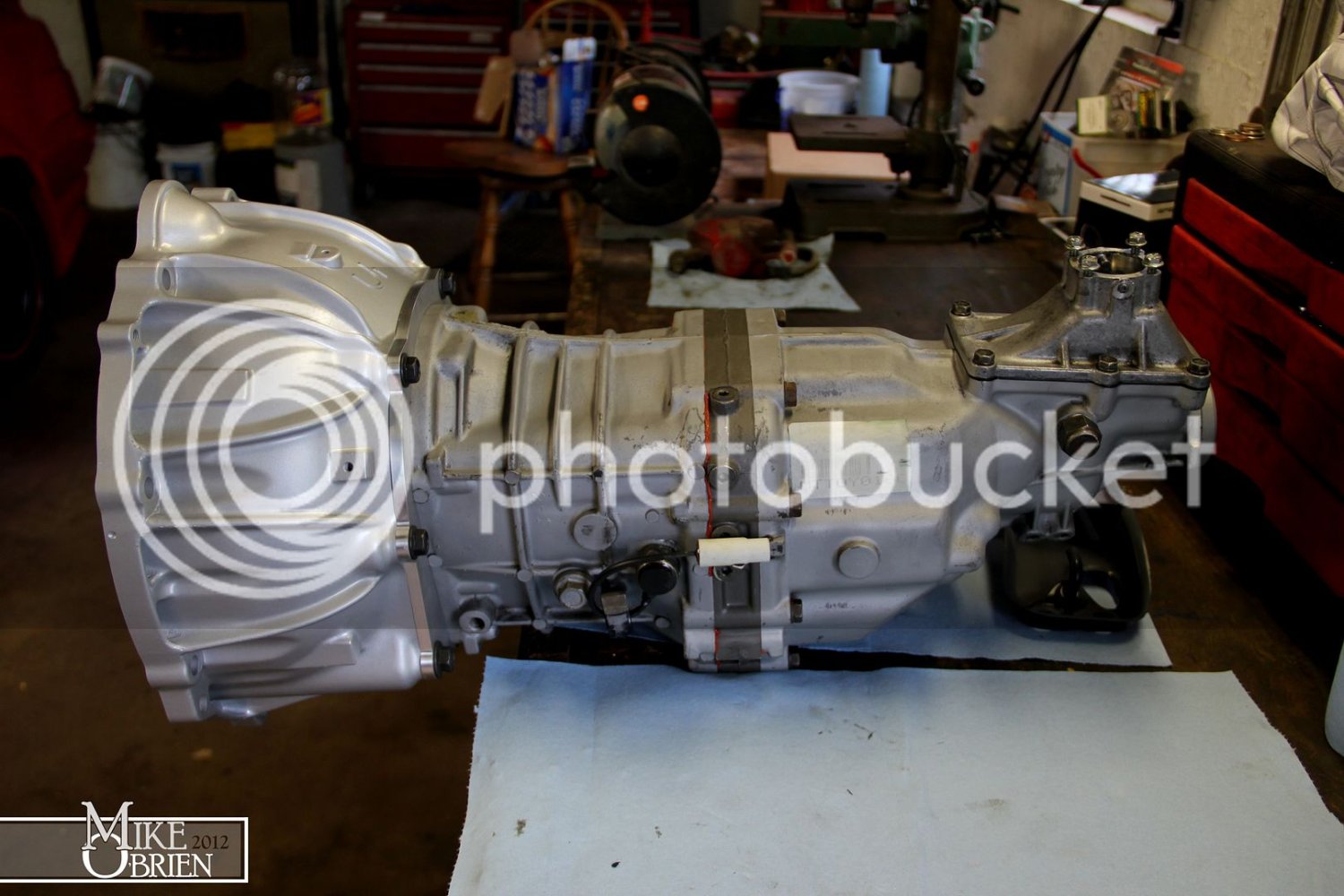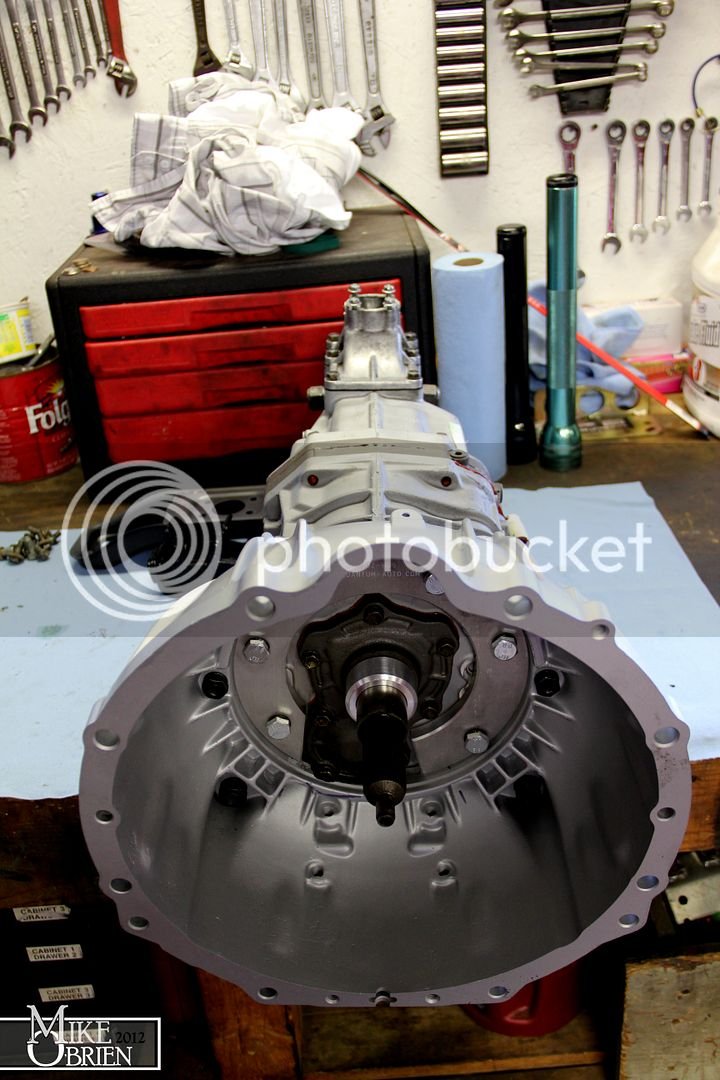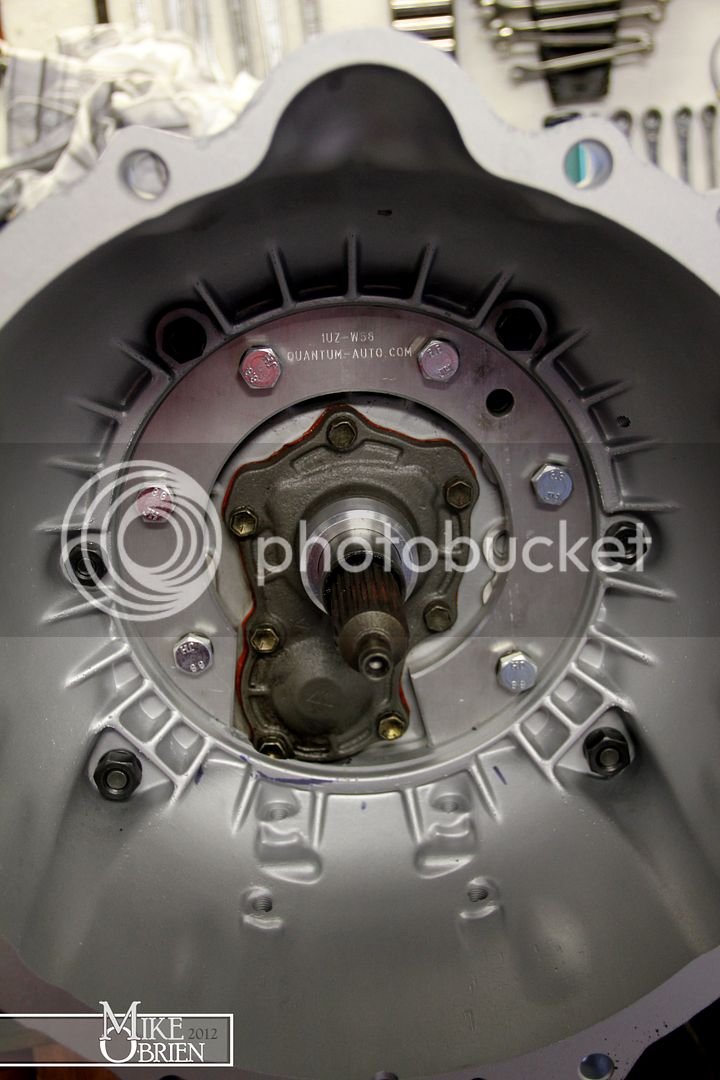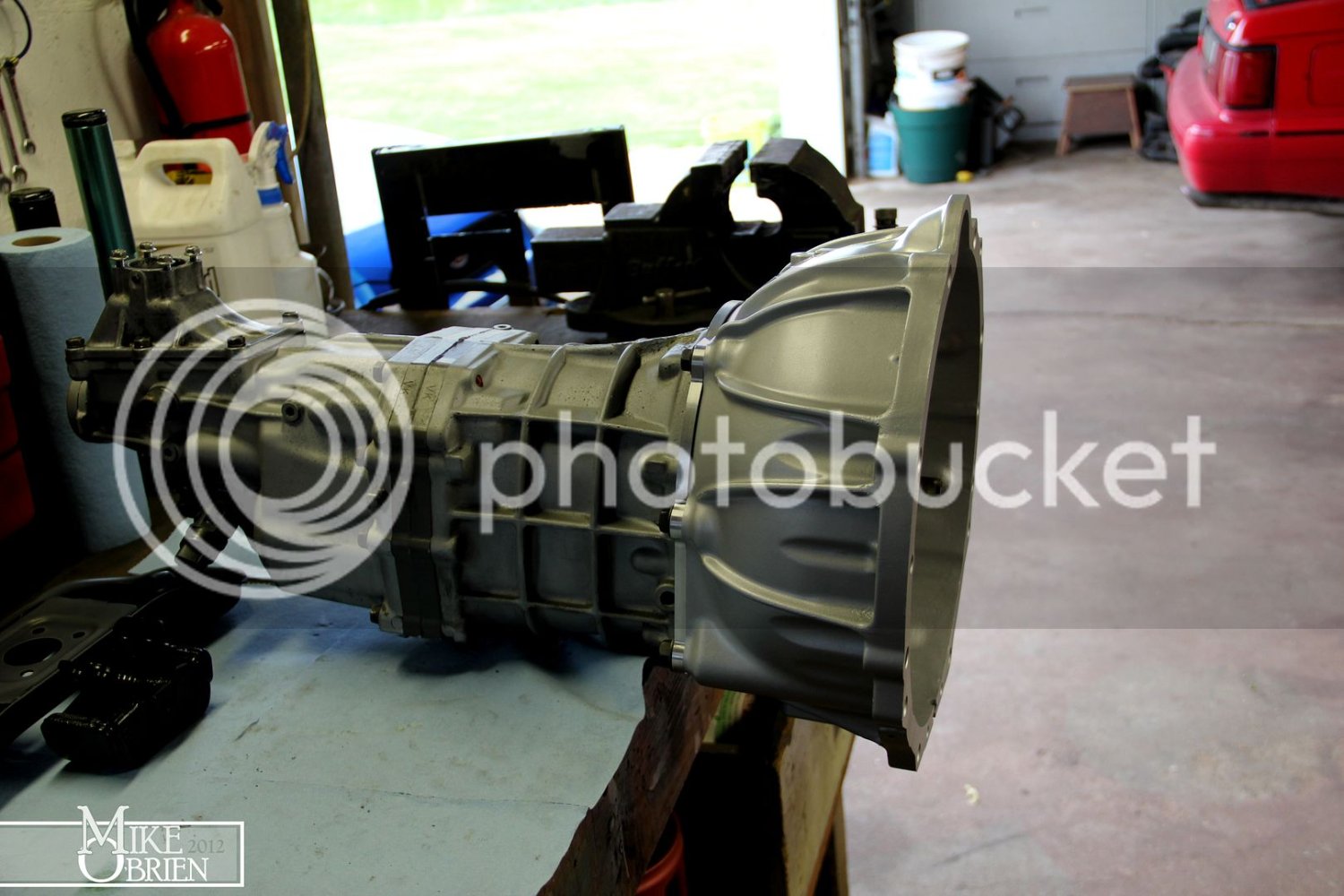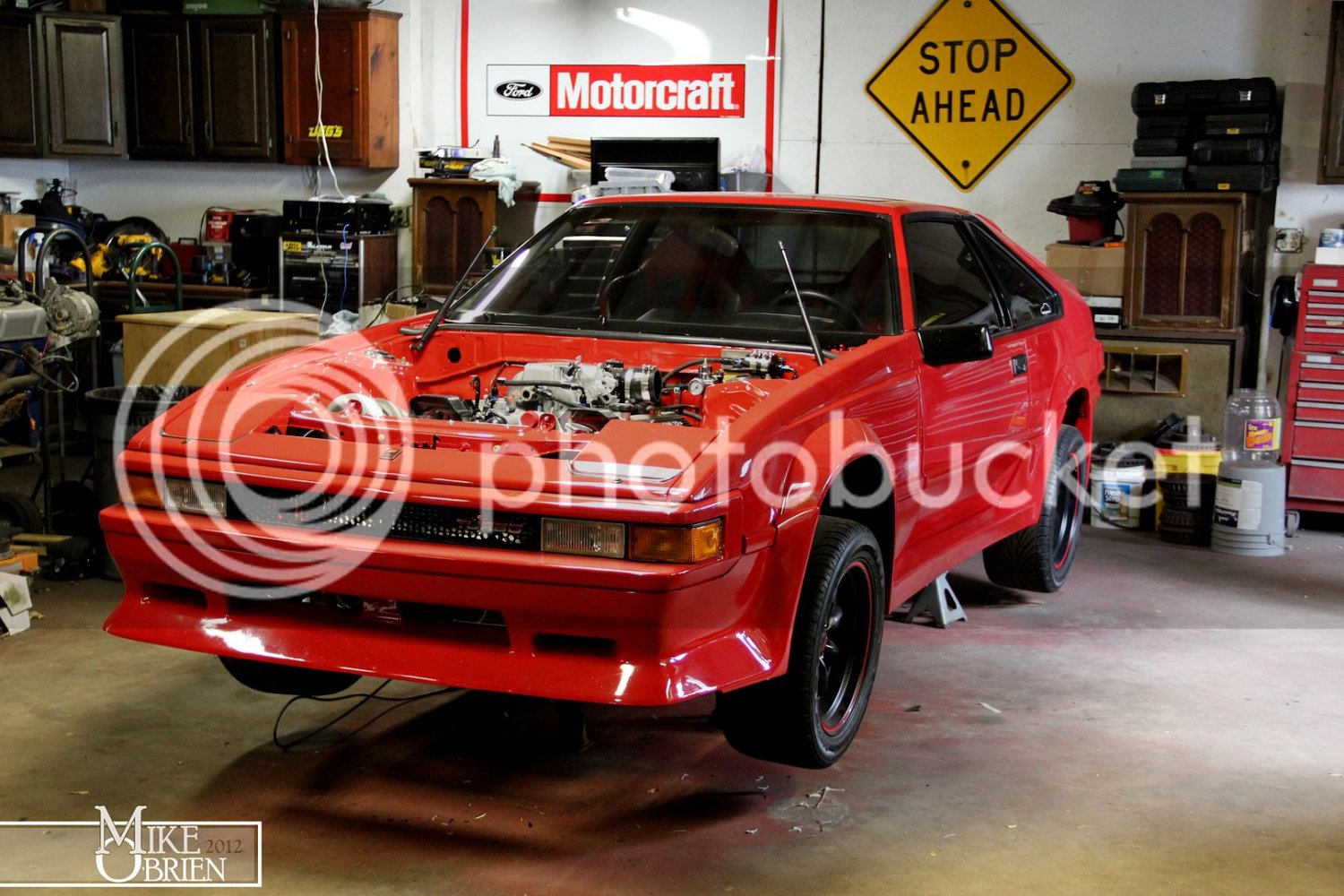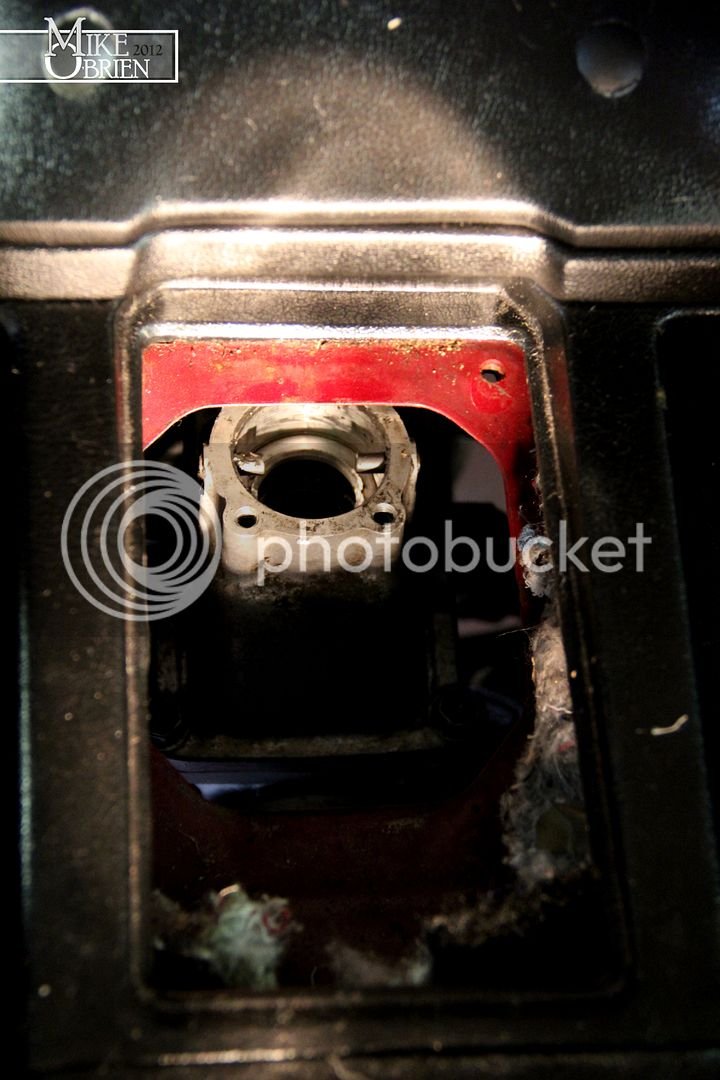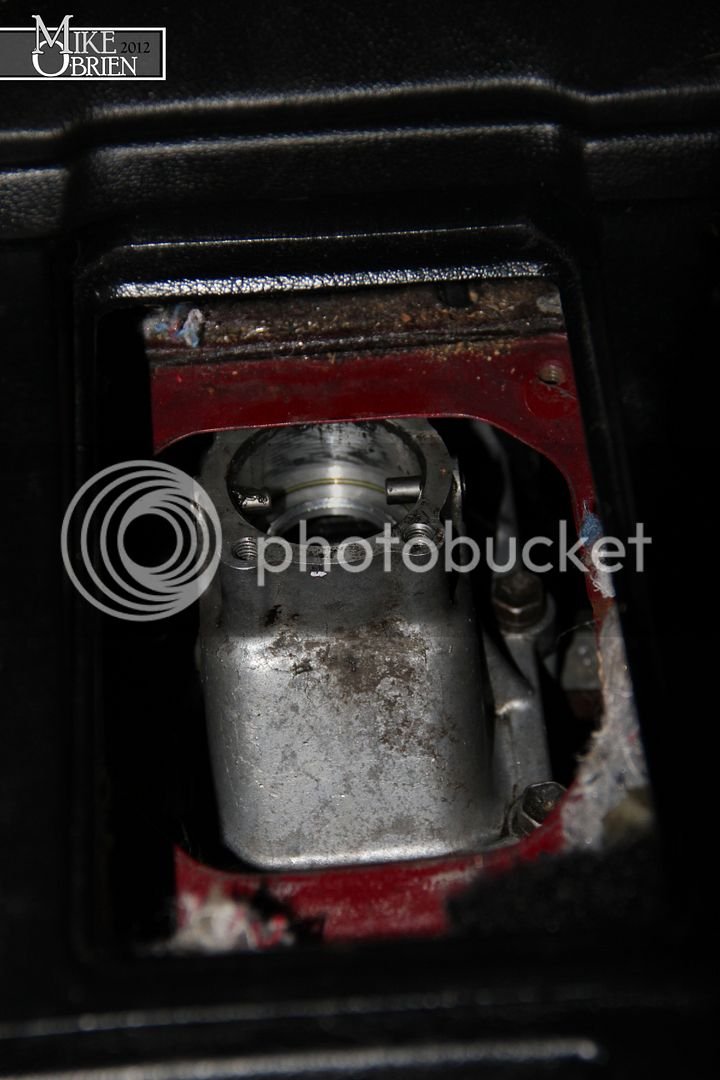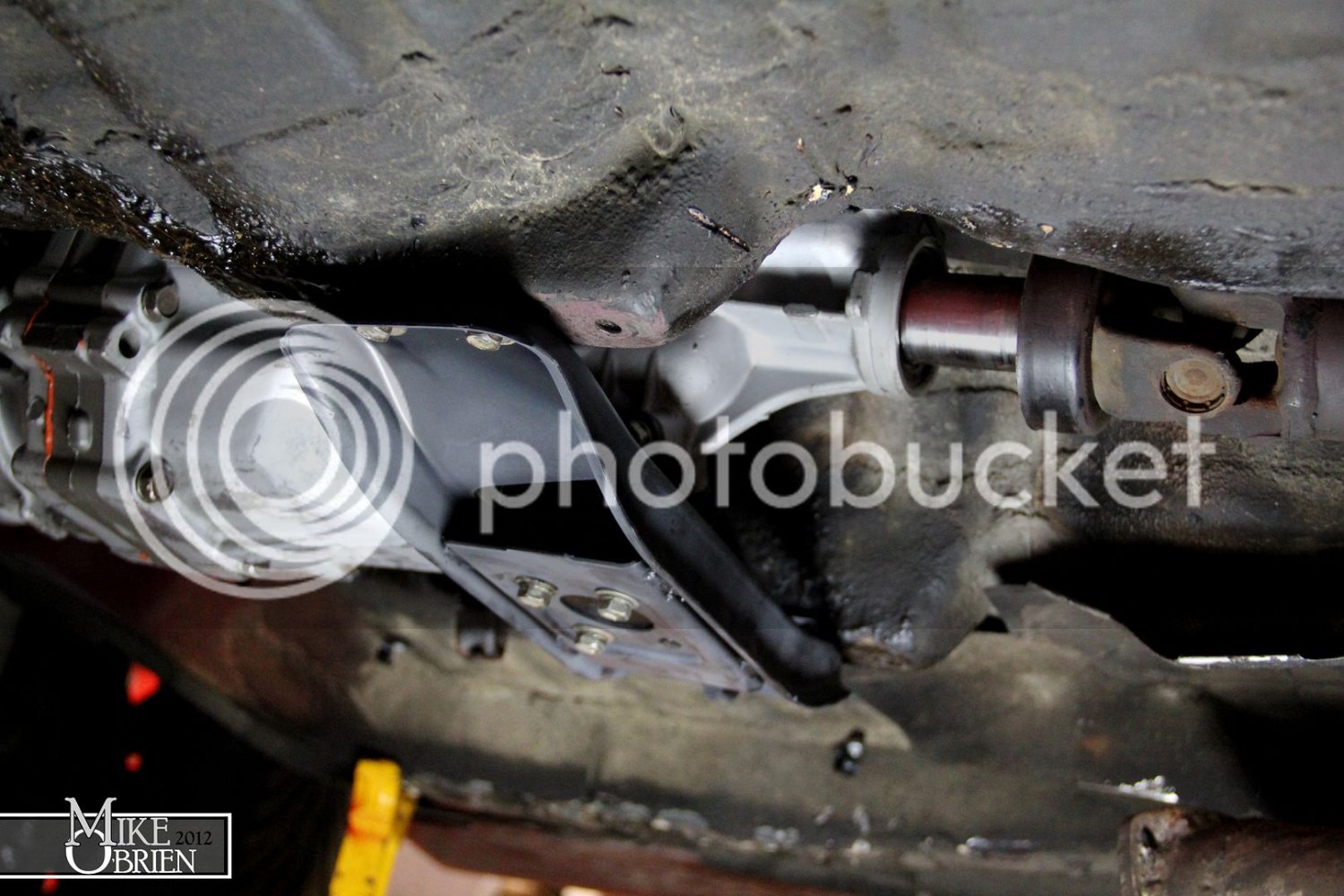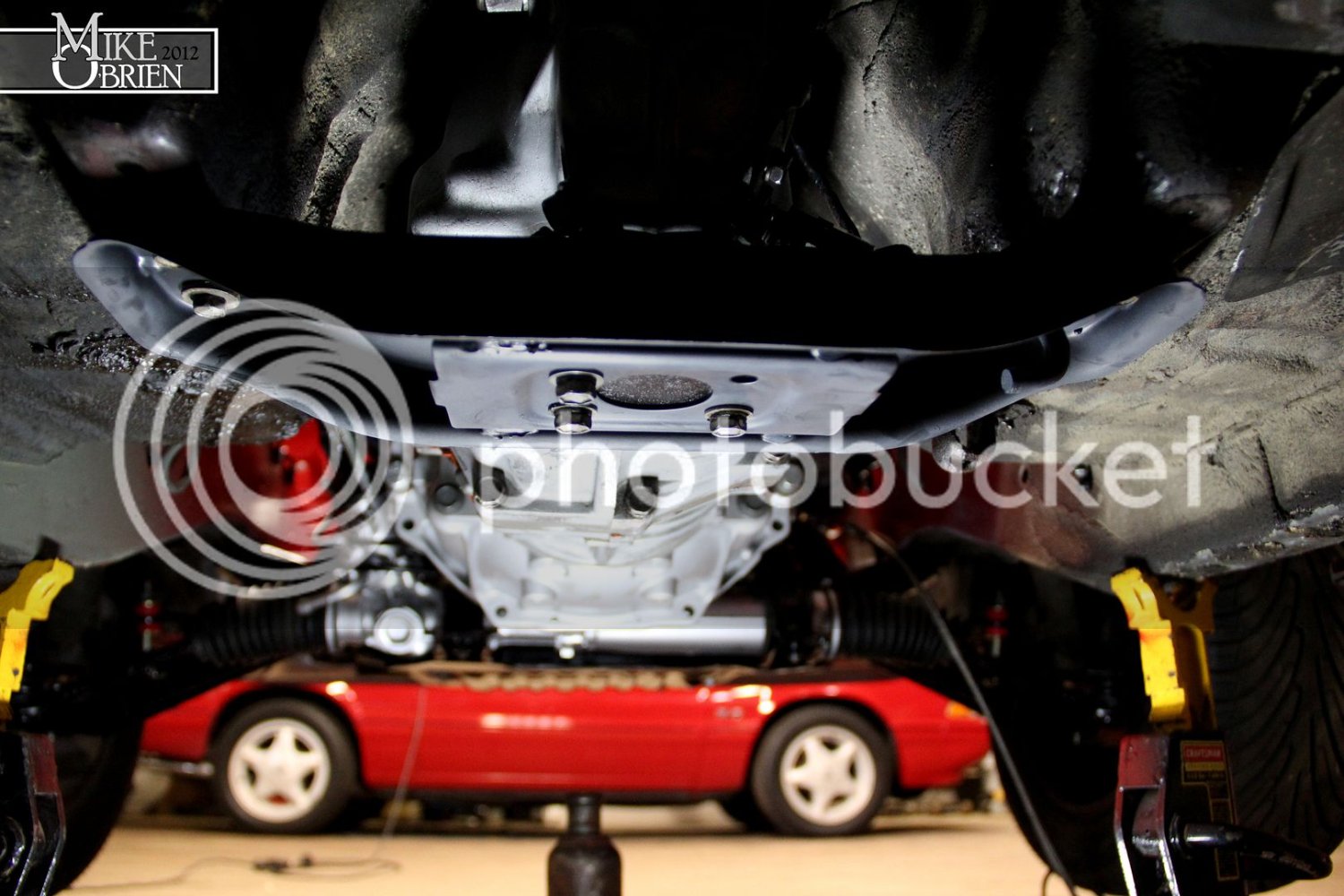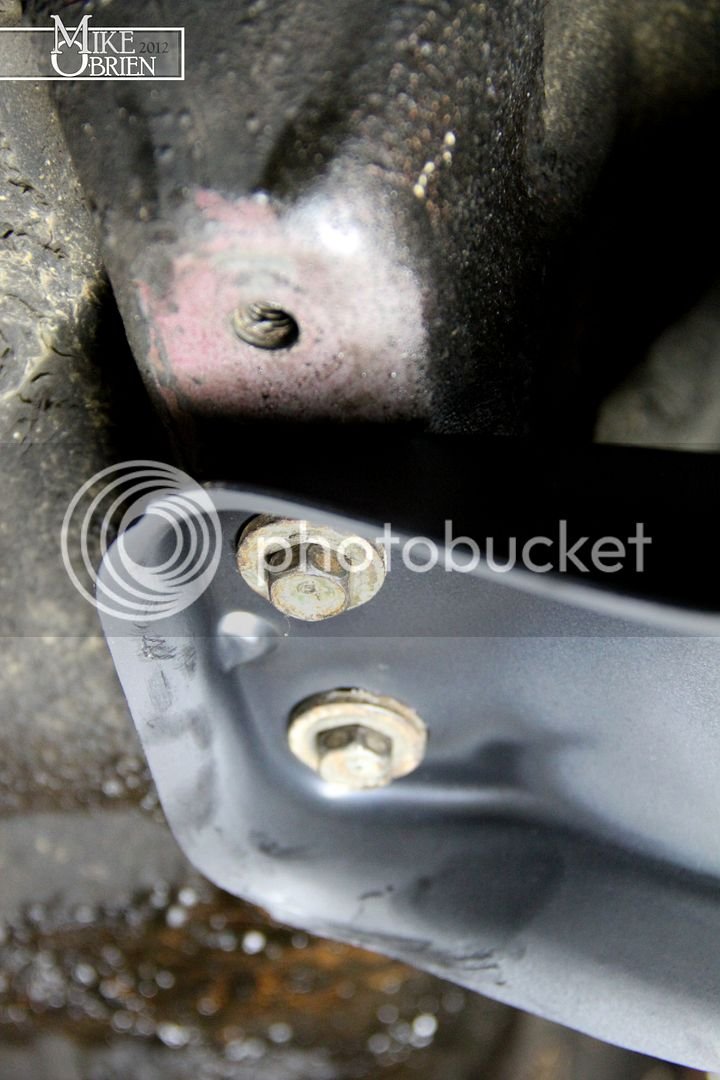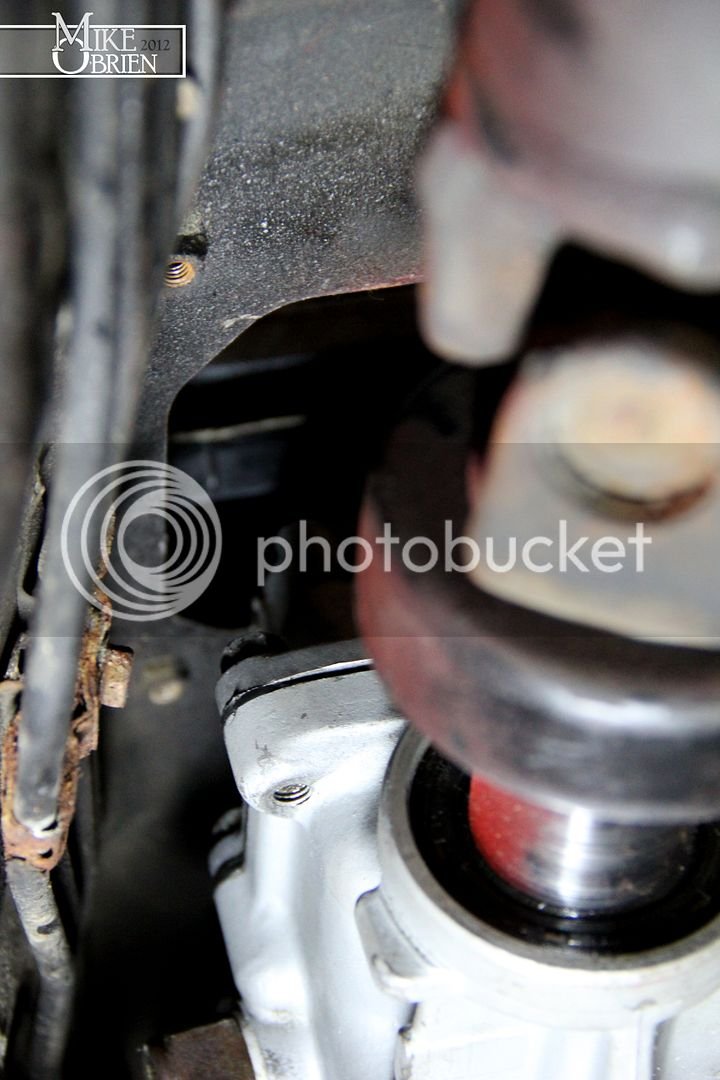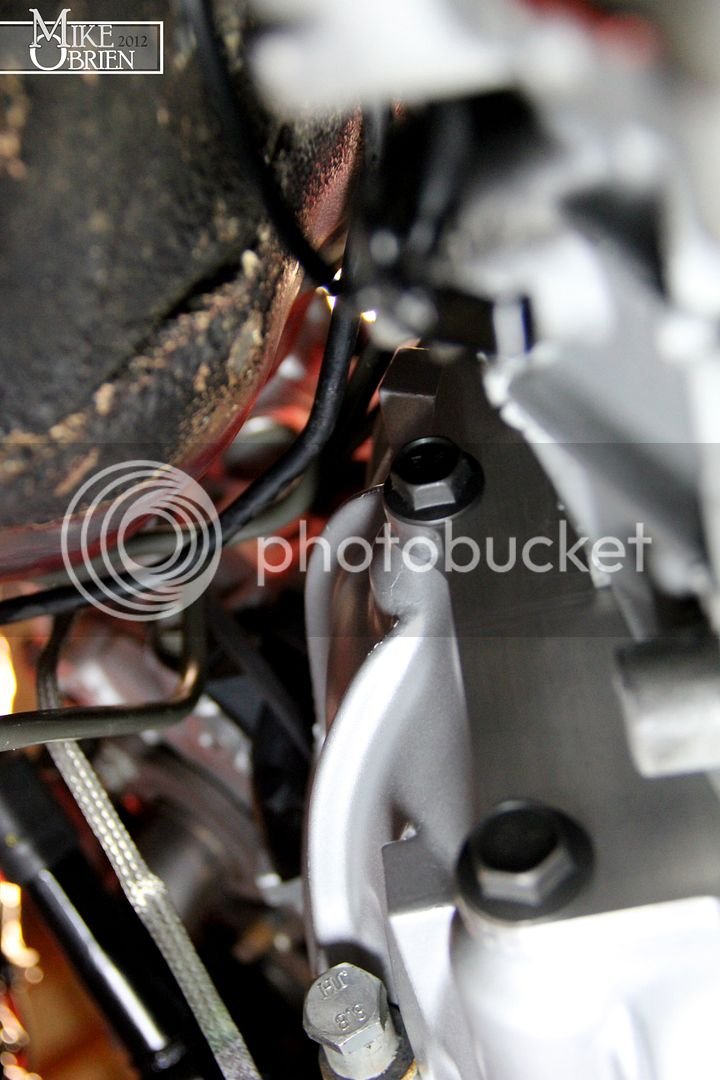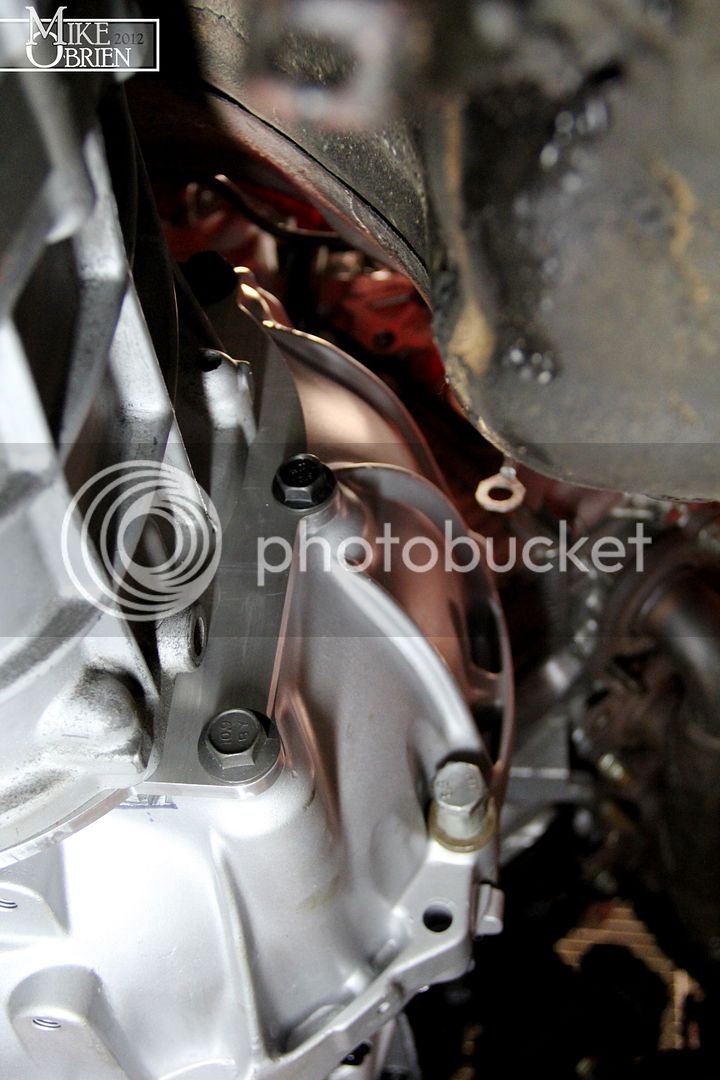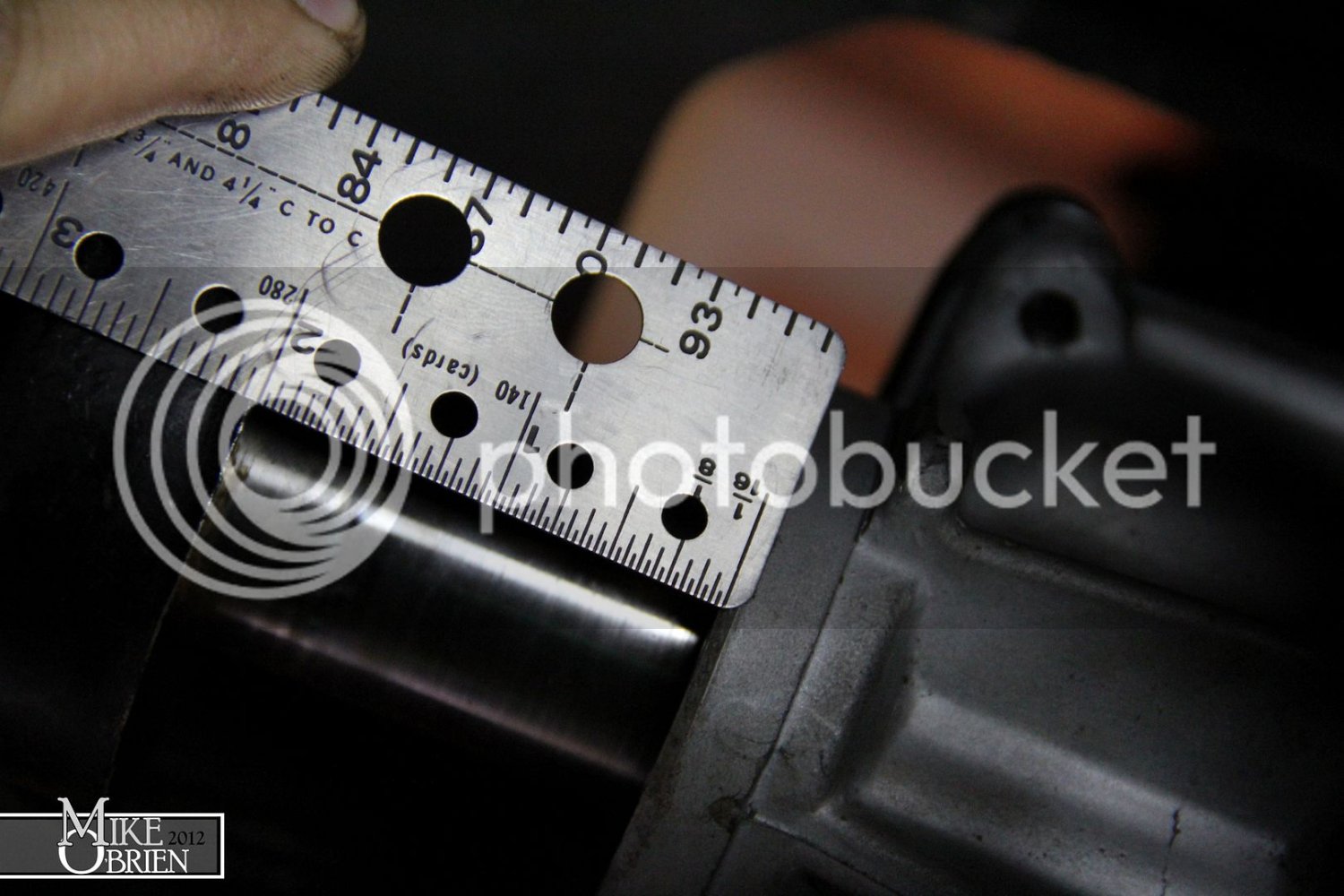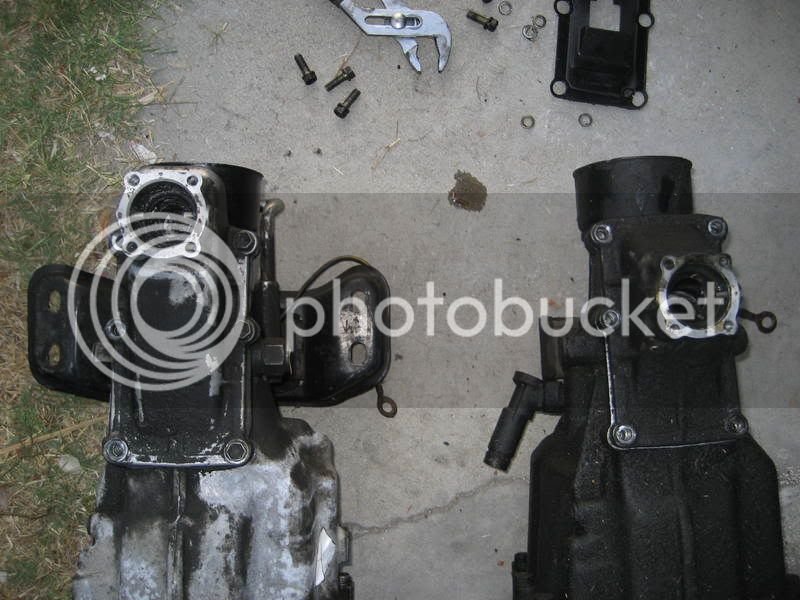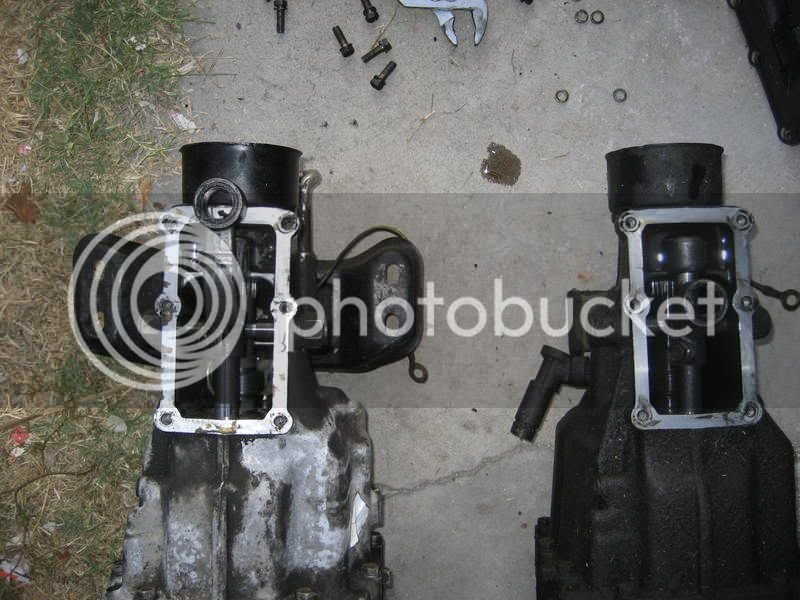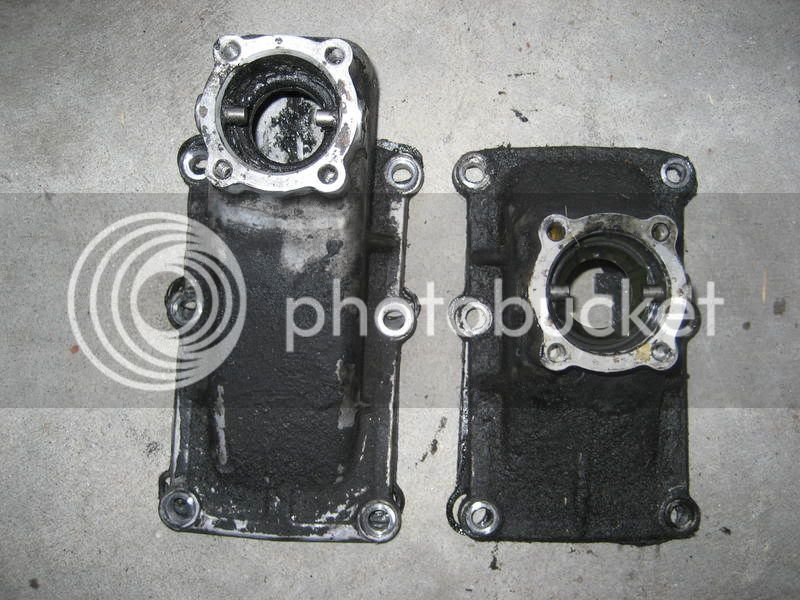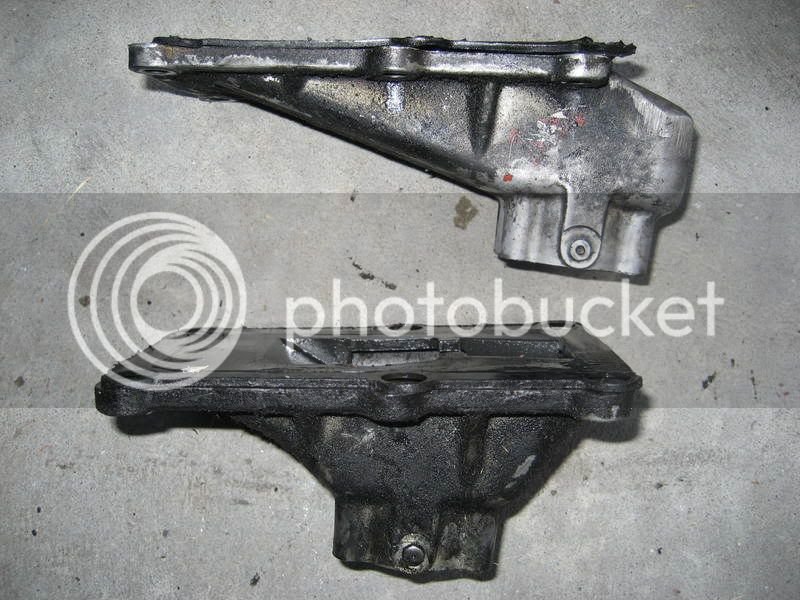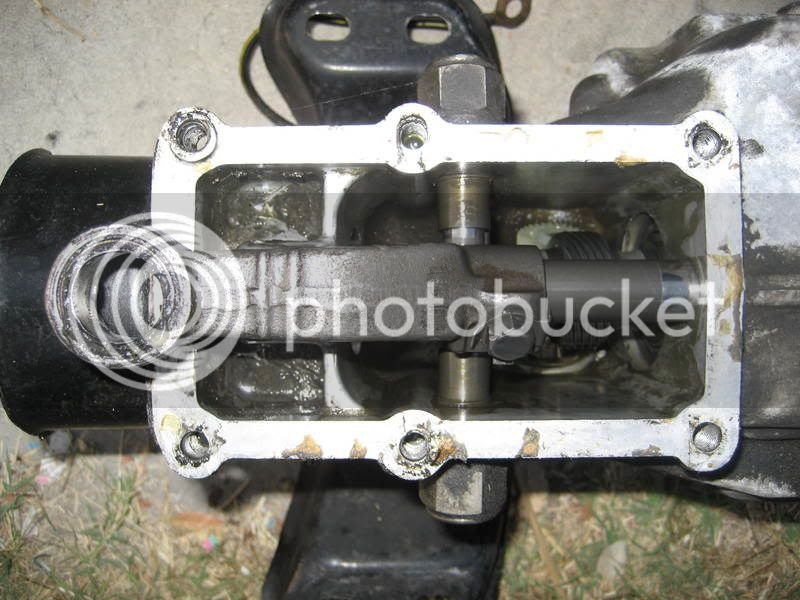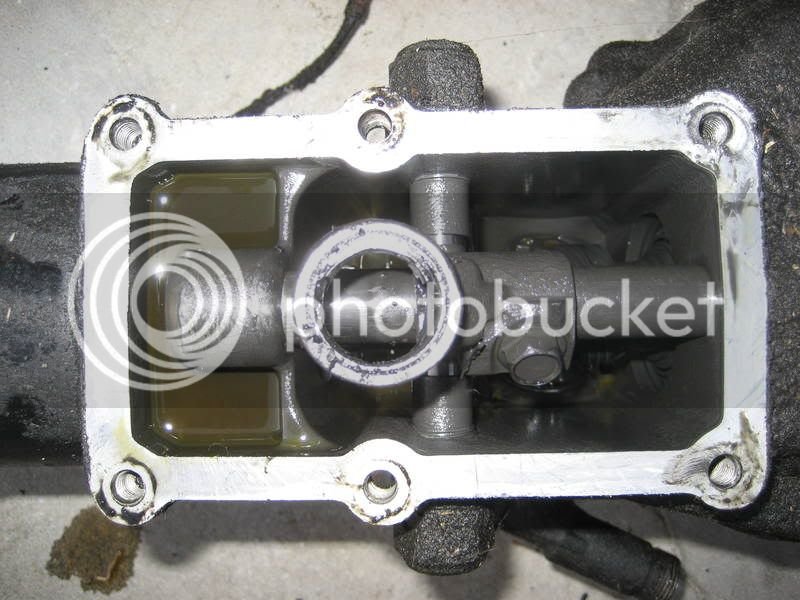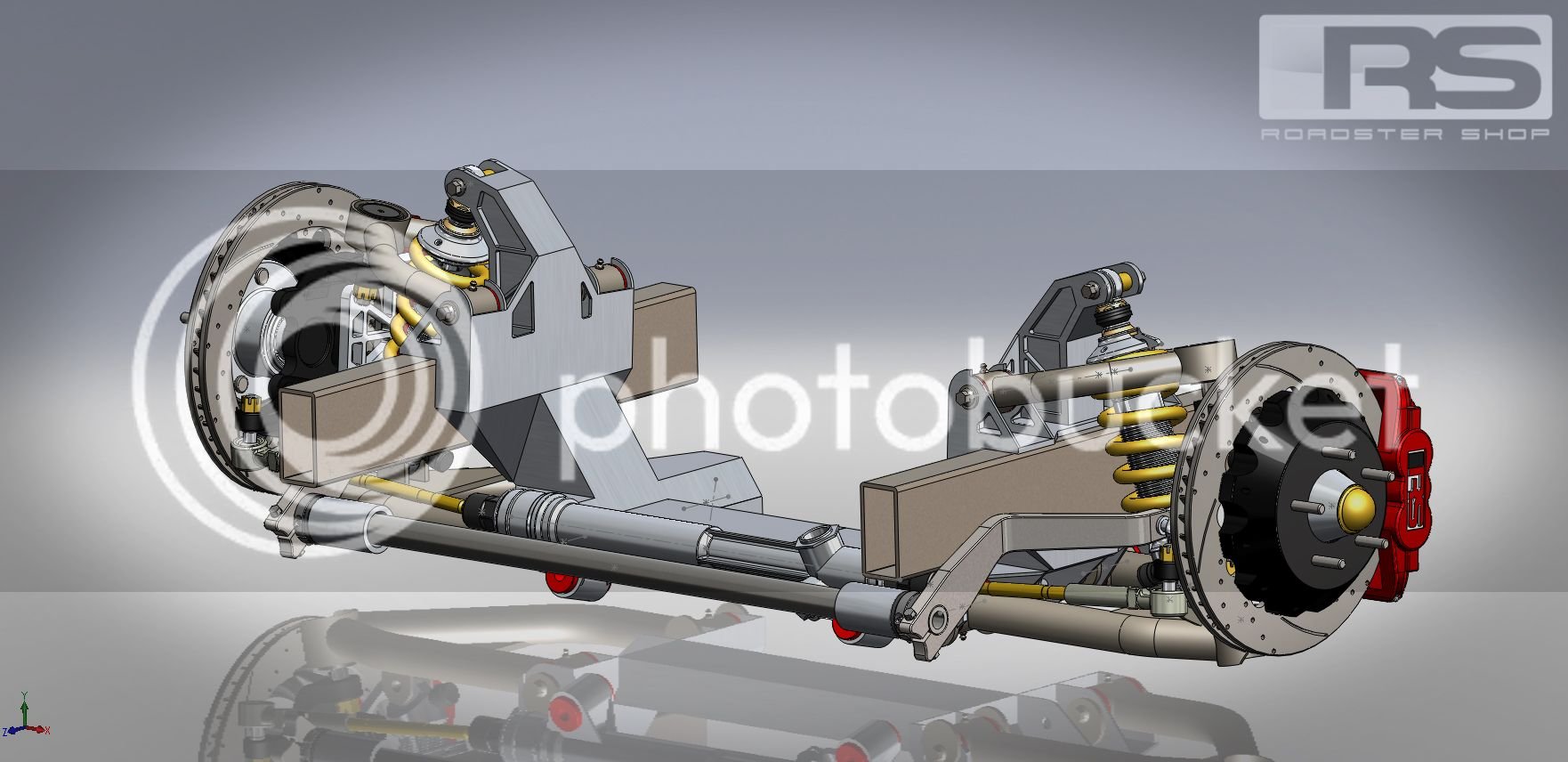MKII_Supra
Member
Ok gang, it's been another long installment since any real updates. Going against my better judgment, I decided to go ahead and paint the engine bay even though the fab work was not finished for the engine bits and pieces. I simply am at a standstill until my tranny adapting issues are restored.
I went to a local rodder's favorite little hole-in-the-wall paint shop to pick up a quart of PPG OMNI MAE single stage acrylic in the shade of red my car was painted way back in 2006. After some confusion and debate over which red it actually was at the paint shop, I went home with a quart of what I thought was correct. I mixed up a small sample batch using graduated cylinders, and mixed it in a shot glass to use with my airbrush on a test panel to verify the color. After the test piece dried (a 3.5" circular section left after cutting an intercooler hole), it was evident that the red I had purchased was not correct. It may be hard to tell in the photos, but in natural light it is way too dark of a red. I am comparing it to a headlight door in the following picture:
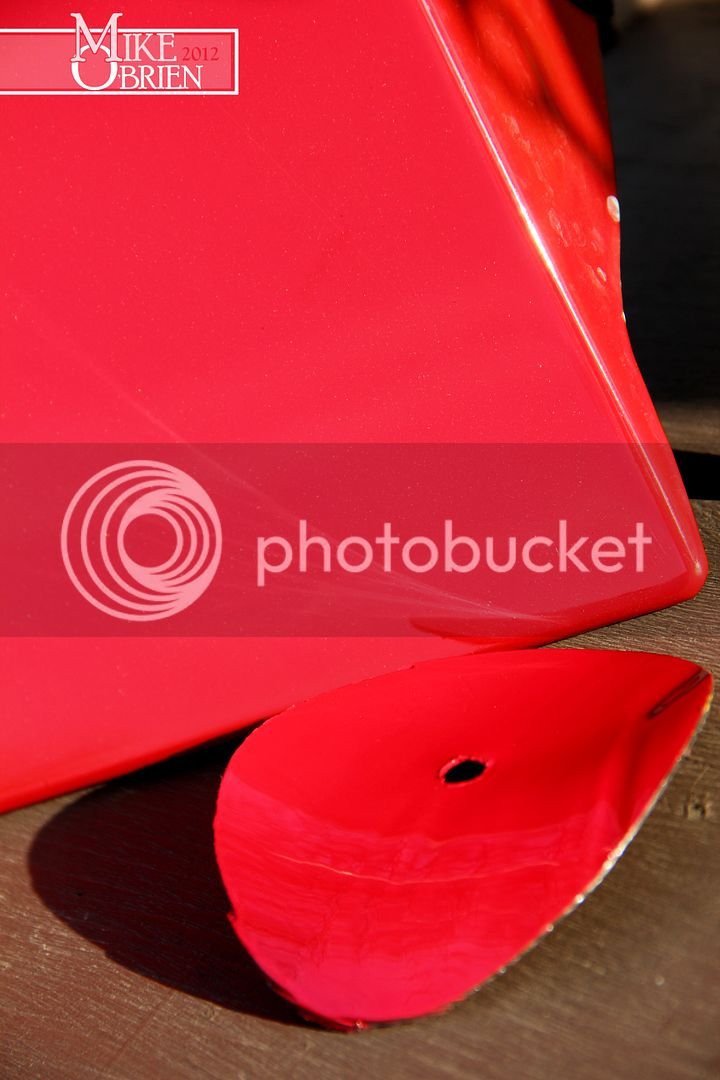
I went back to the shop, and finally was able to confirm with my body guy the exact shade of red I needed with the exact PPG number. Volkswagon LP3G Flash Red (1996) was the correct variant, and the match is great with my six year old body paint.
The test pieces would be the hood hinges as I sprayed them in color before seam sealing them back to the car. I again mixed a small batch and used my airbrush to cover every small crevice of the hinges with multiple coats.
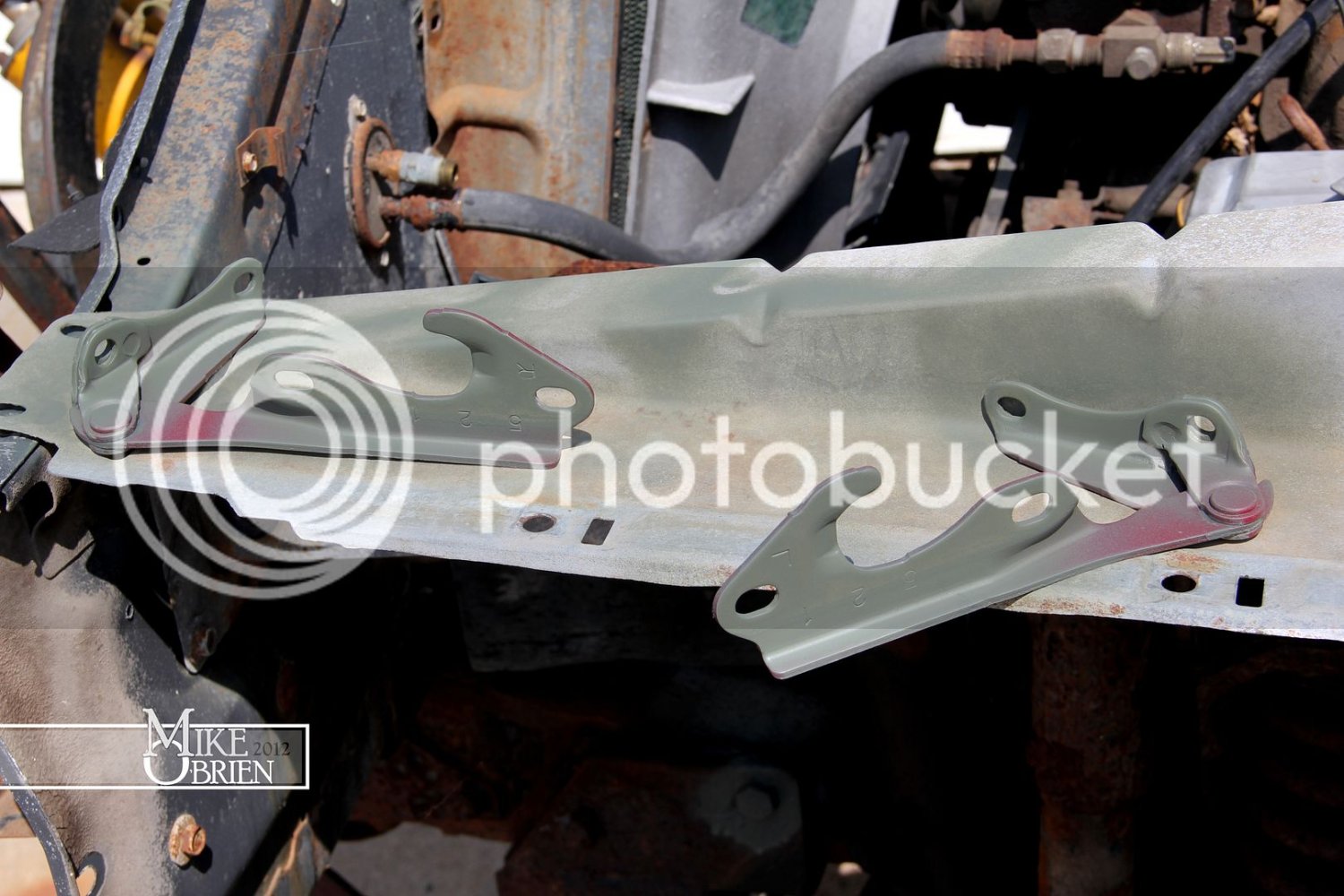

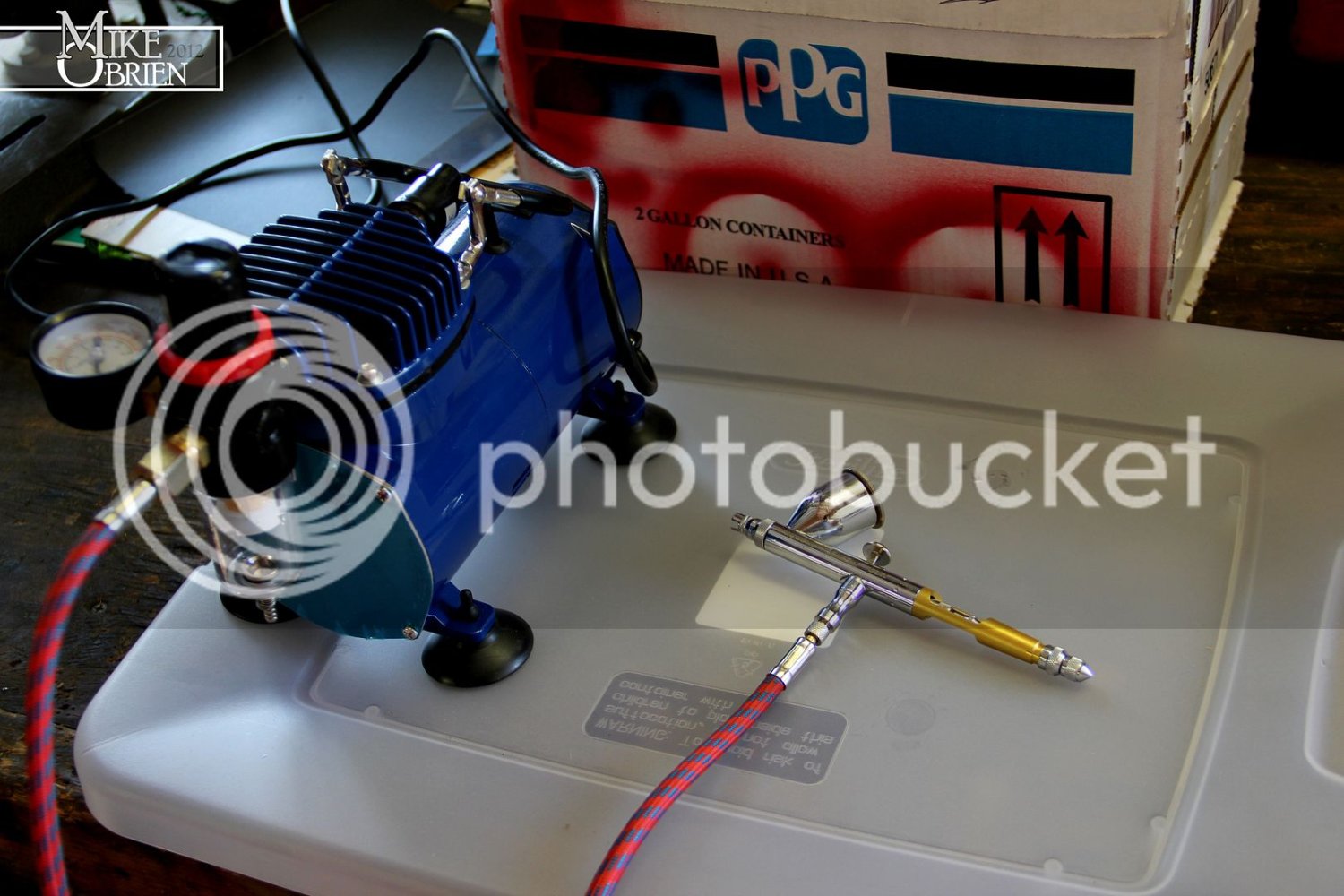
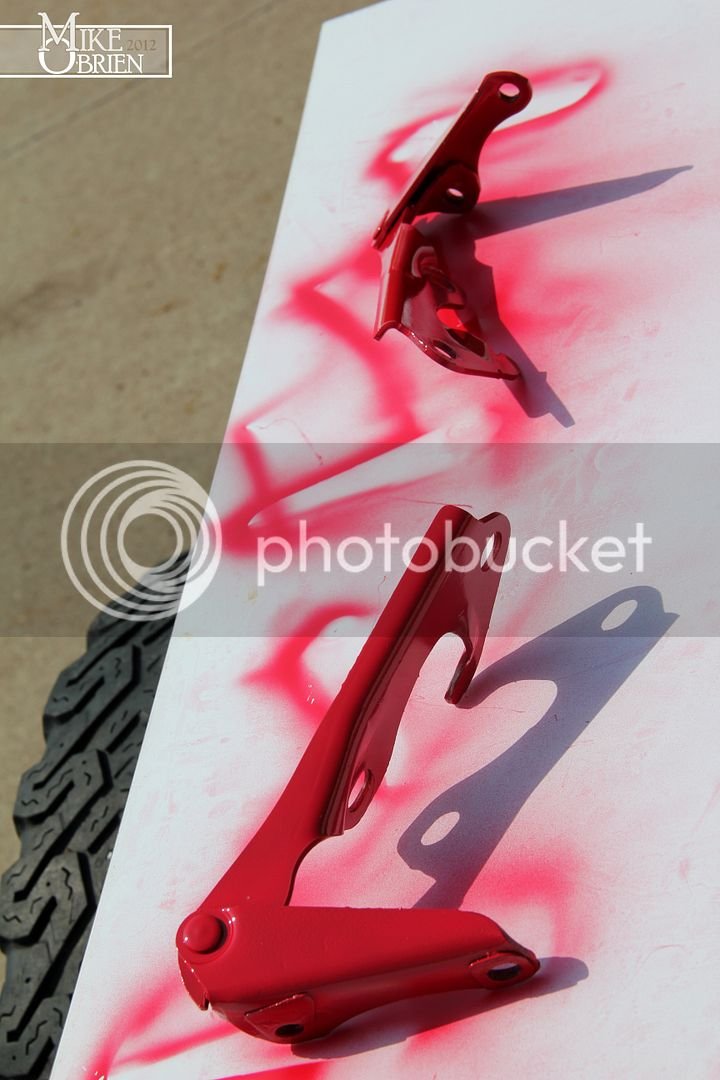
Very happy with the match, the engine bay was checked to make sure everything was prepped correctly, and pushed outside for a thorough cleaning.
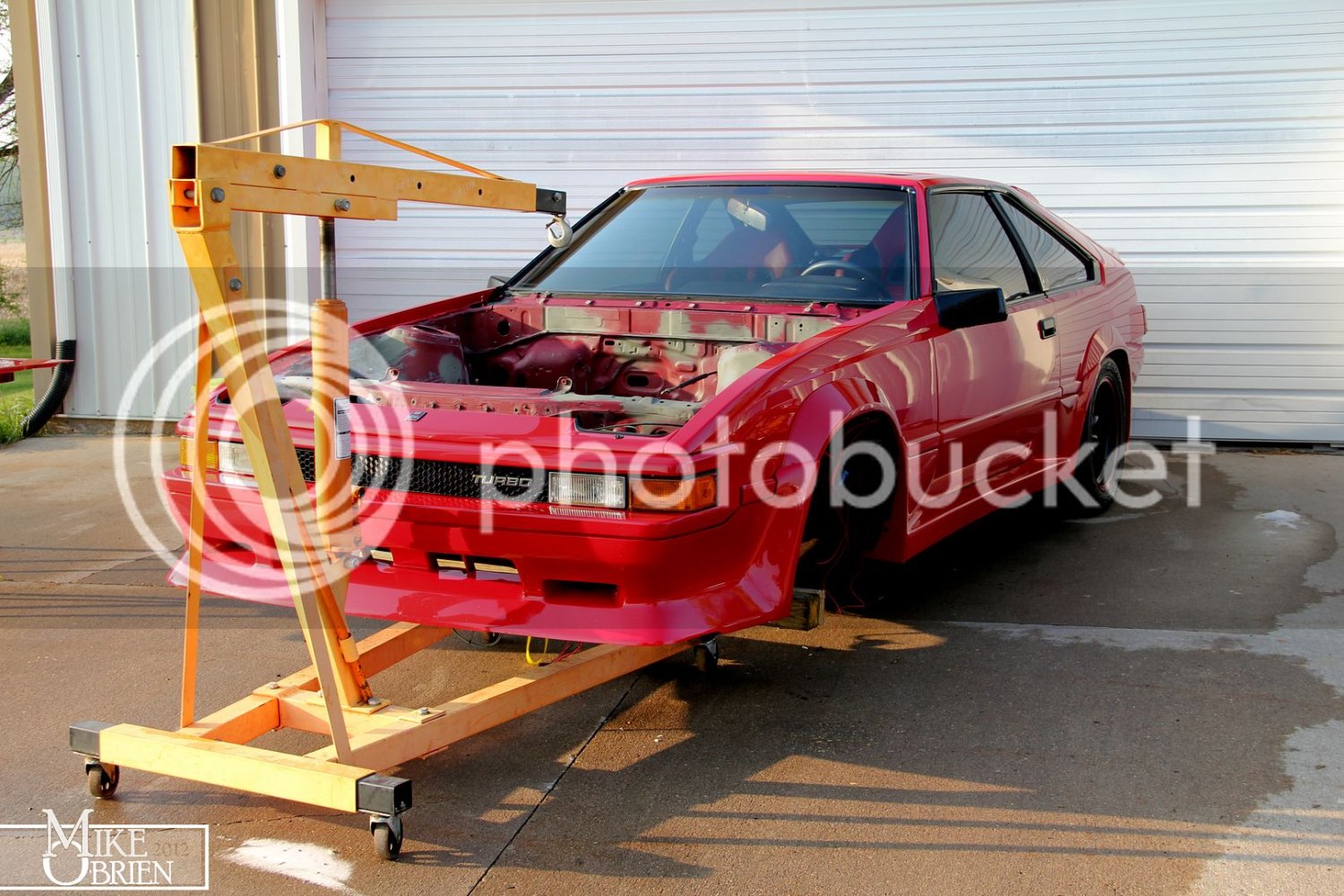
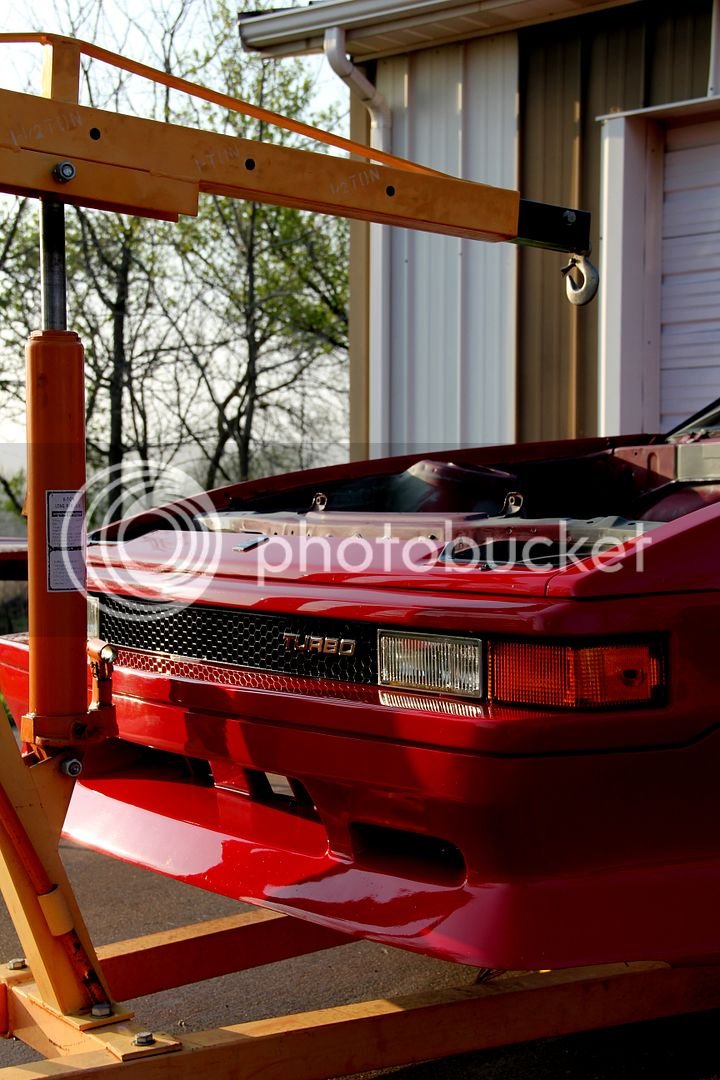
The hinges were reassembled to the car with new seam sealer around their base just like from the factory.
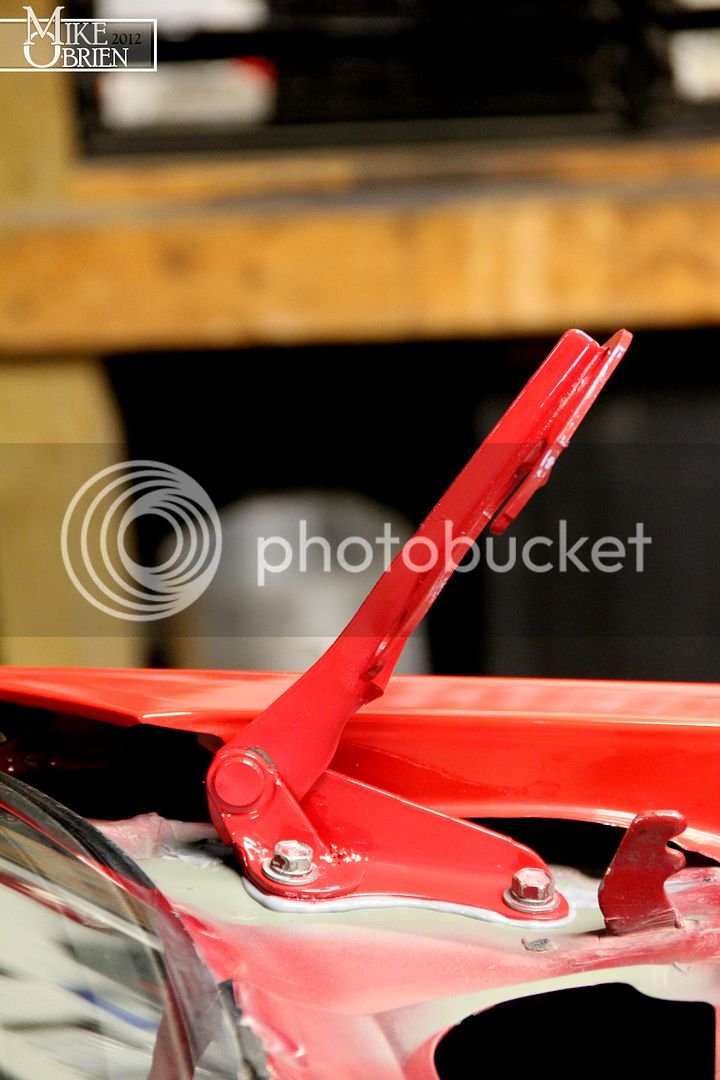
While the car was outside, the entire garage was swept and dusted entirely, while the compressor was evacuated and the drain removed overnight. The next day, the engine bay was thoroughly checked and wiped down with prep cleaner.
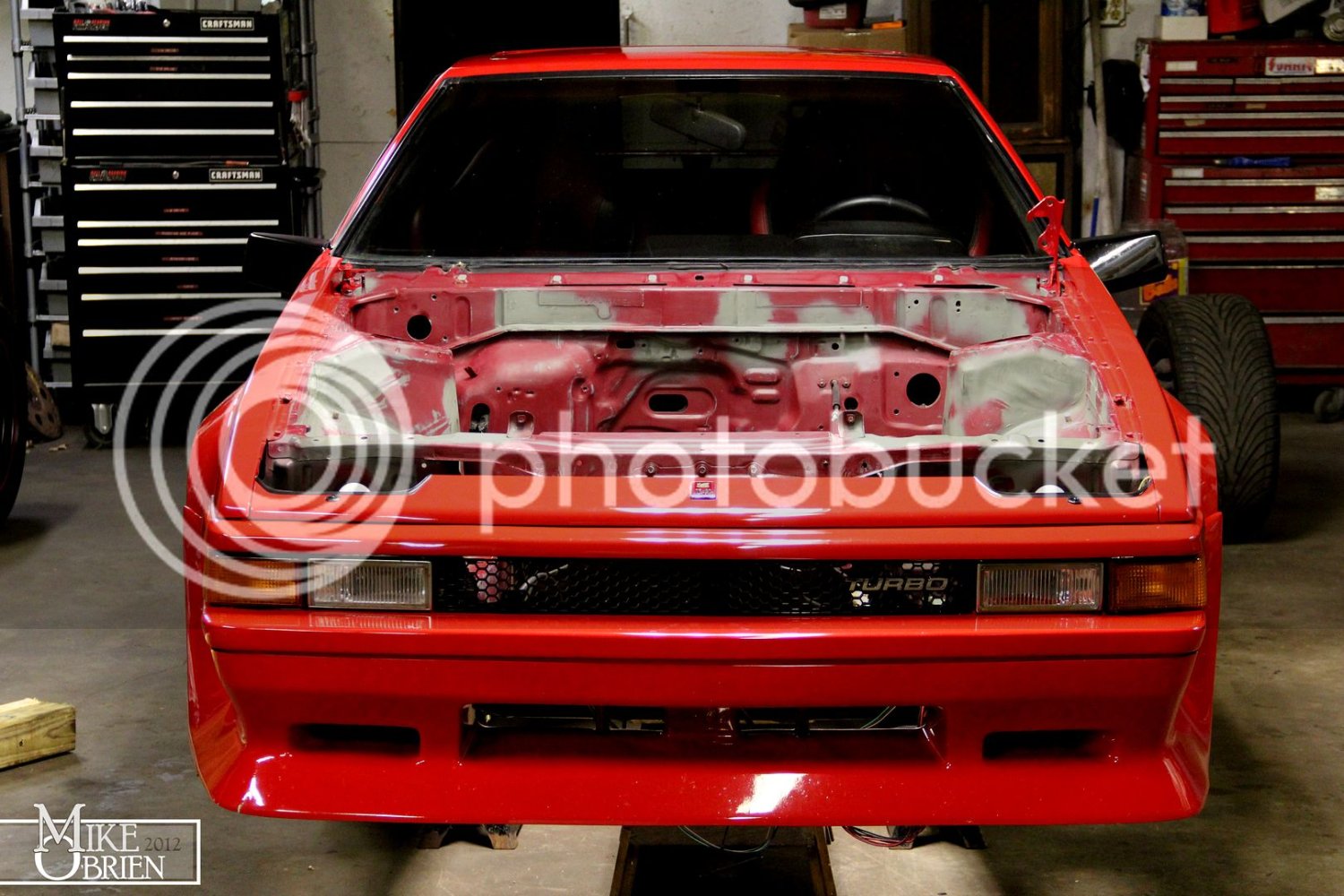
The entire car was masked to make sure no overspray crept its way onto any other part of the car. After a wipe down with a tack rag, I was ready to shoot my first coat of paint by myself with an HLVP gun. Using only half of the quart of paint, I was able to lay down three nice coats within ten minute windows as per the instructions. The mix requires a ratio of paint, reducer and hardener of 8:1:1 respectively.
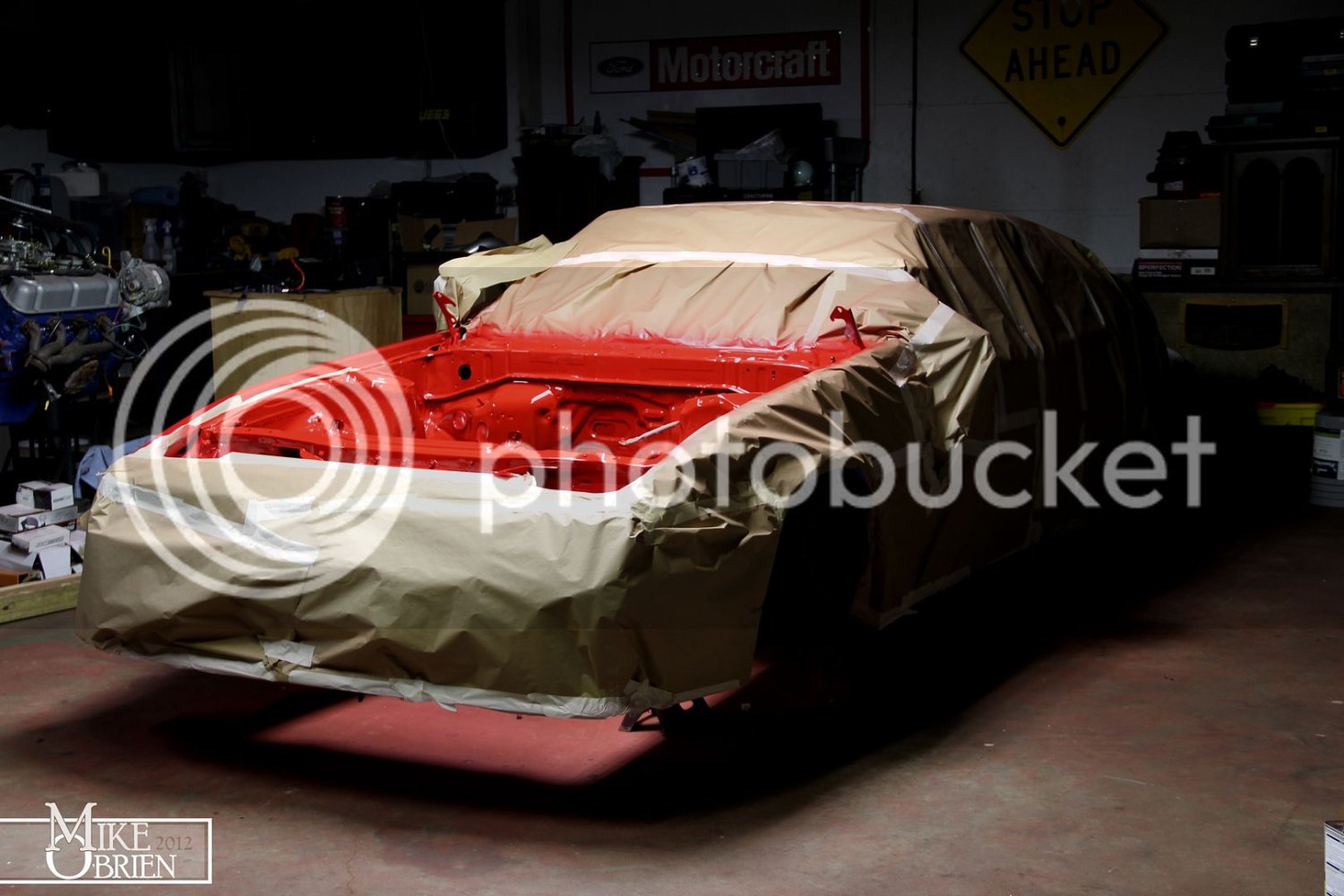
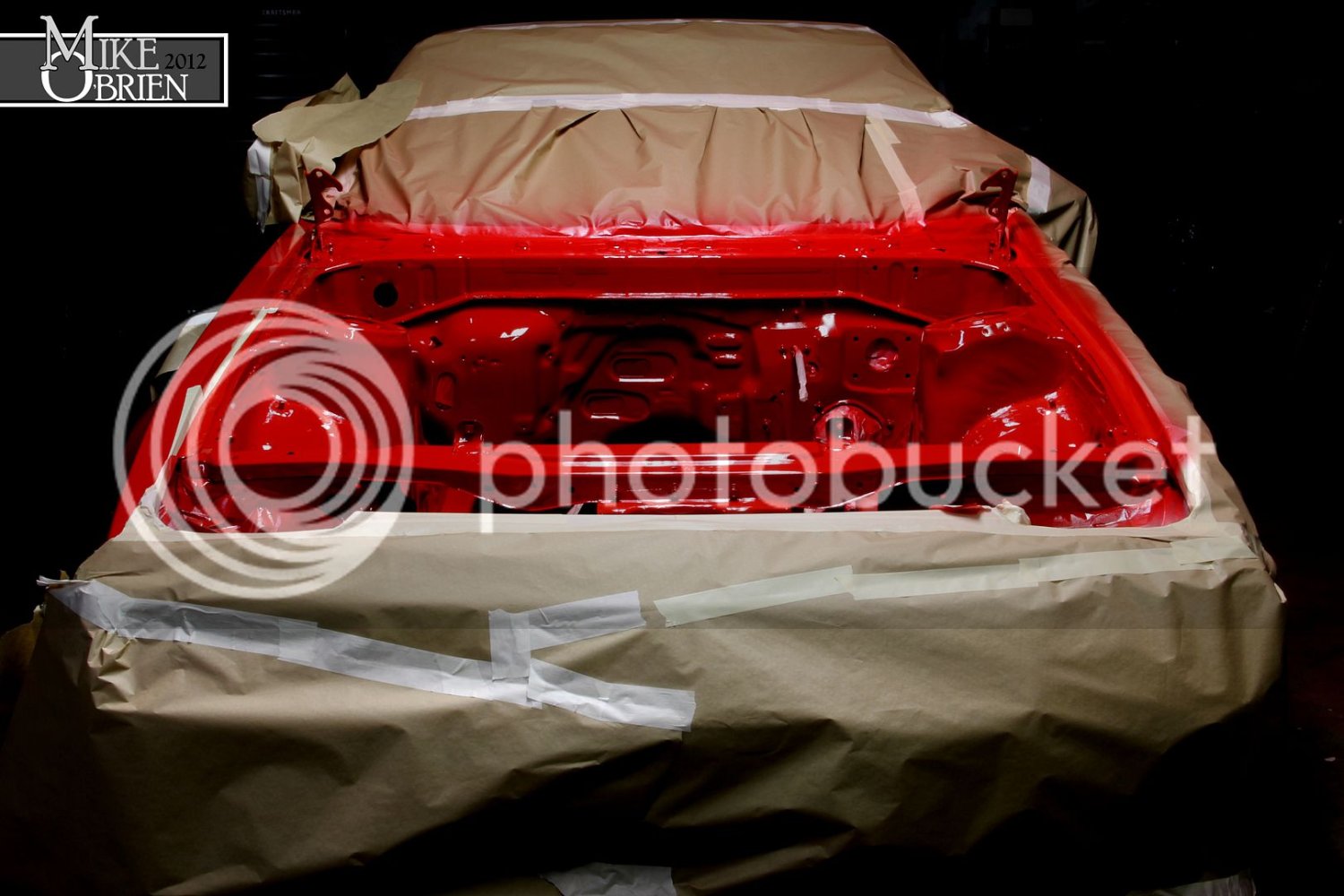
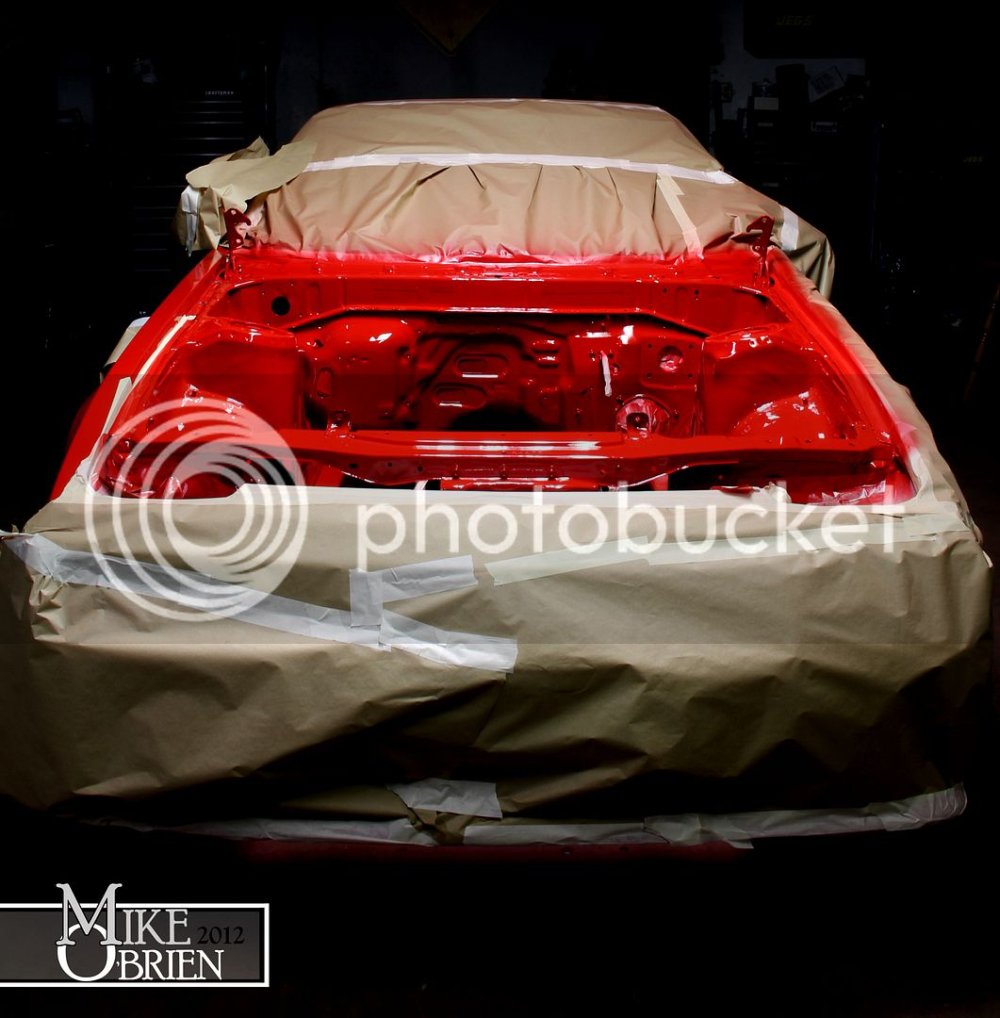
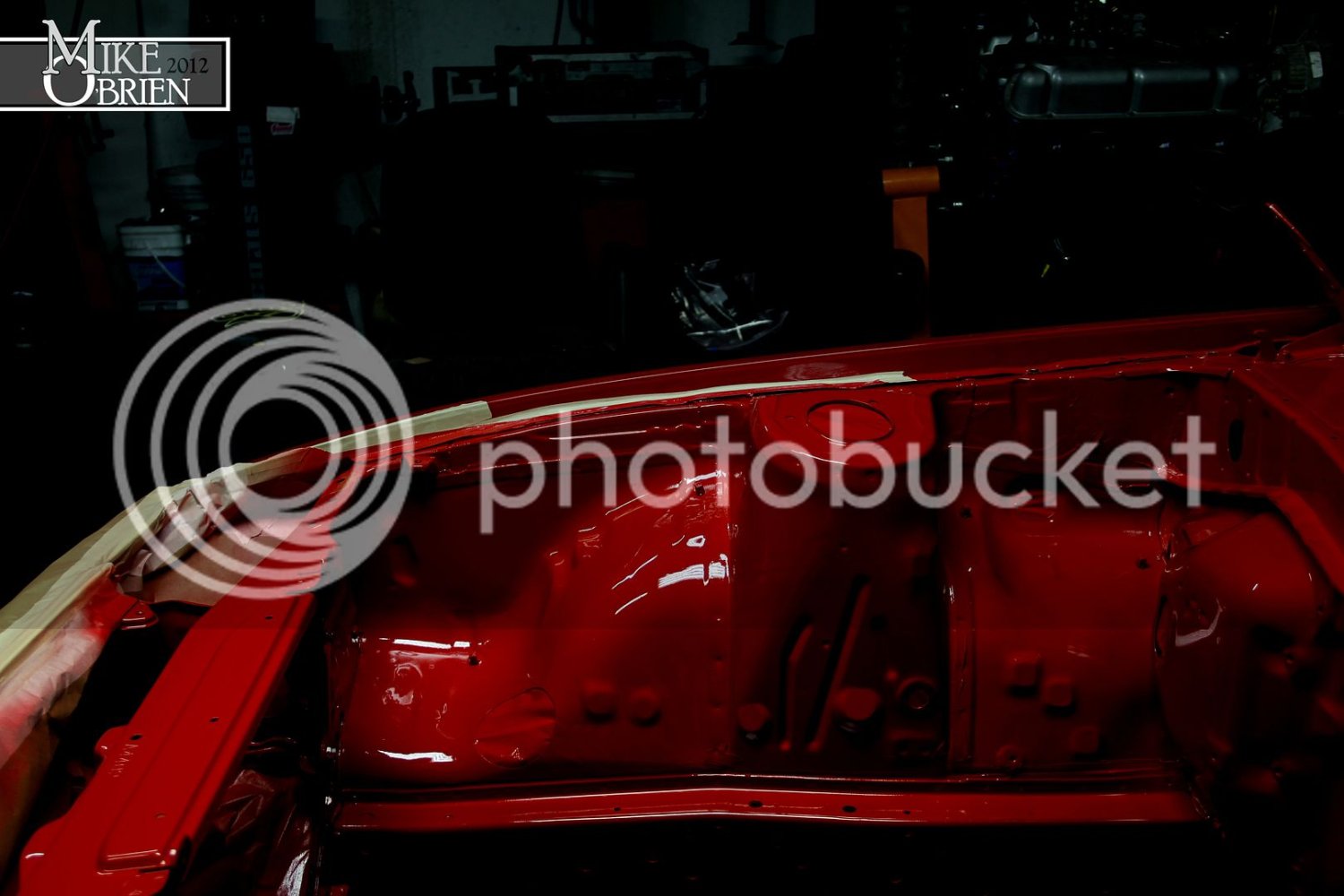
Needless to say, I was very happy with the results.
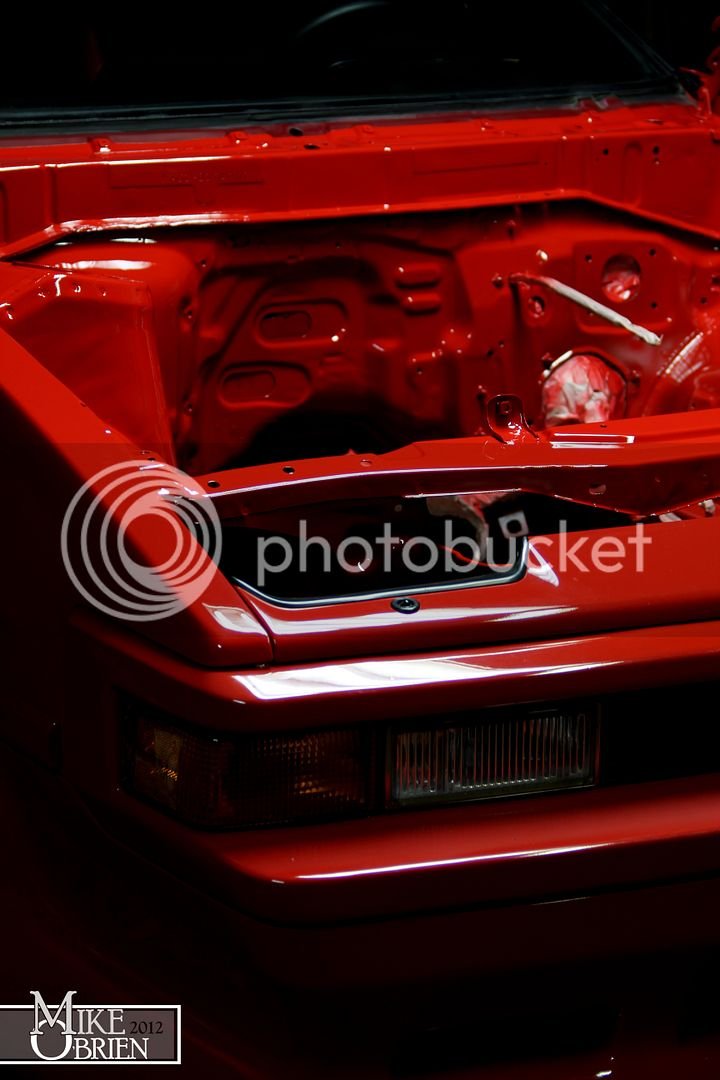
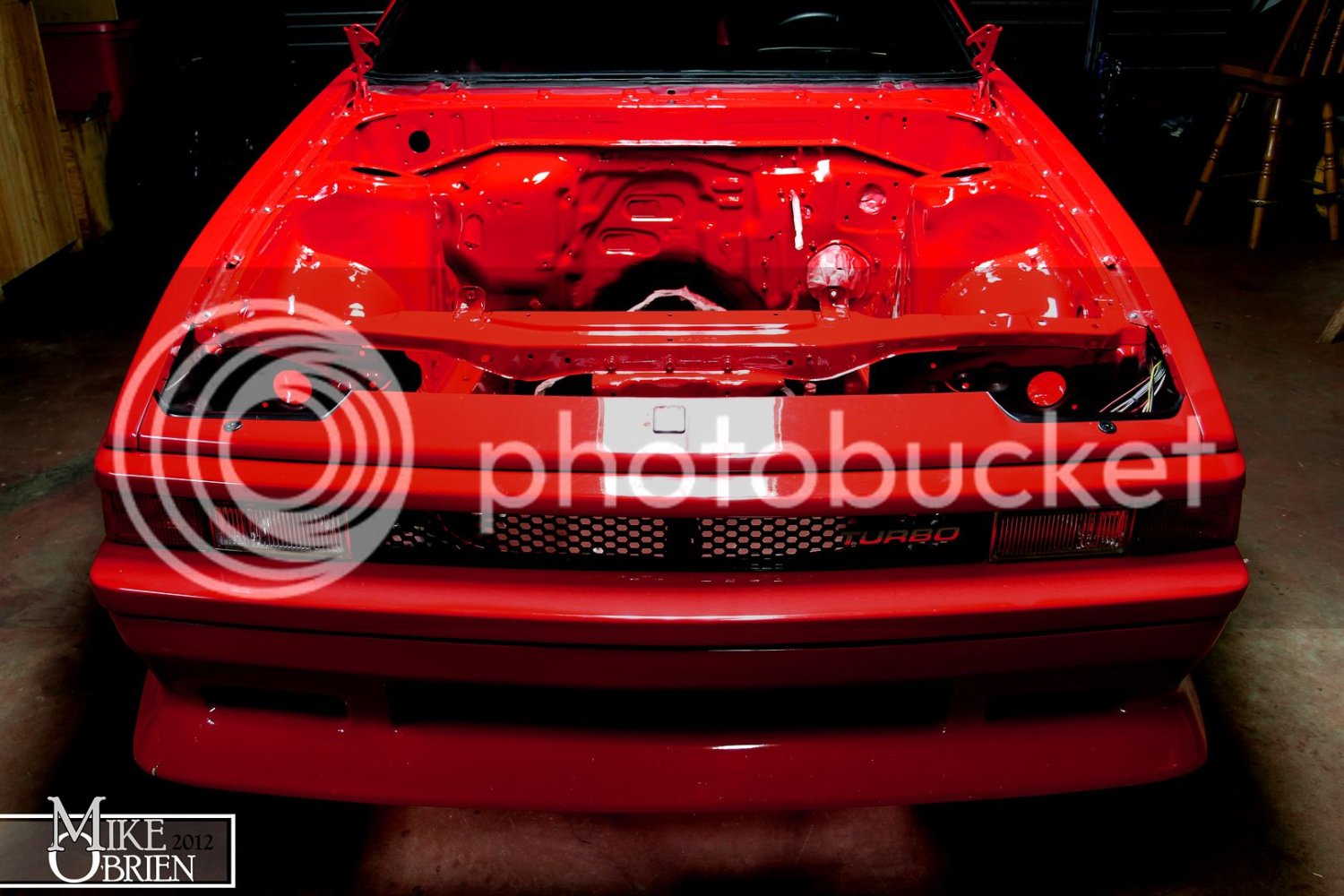
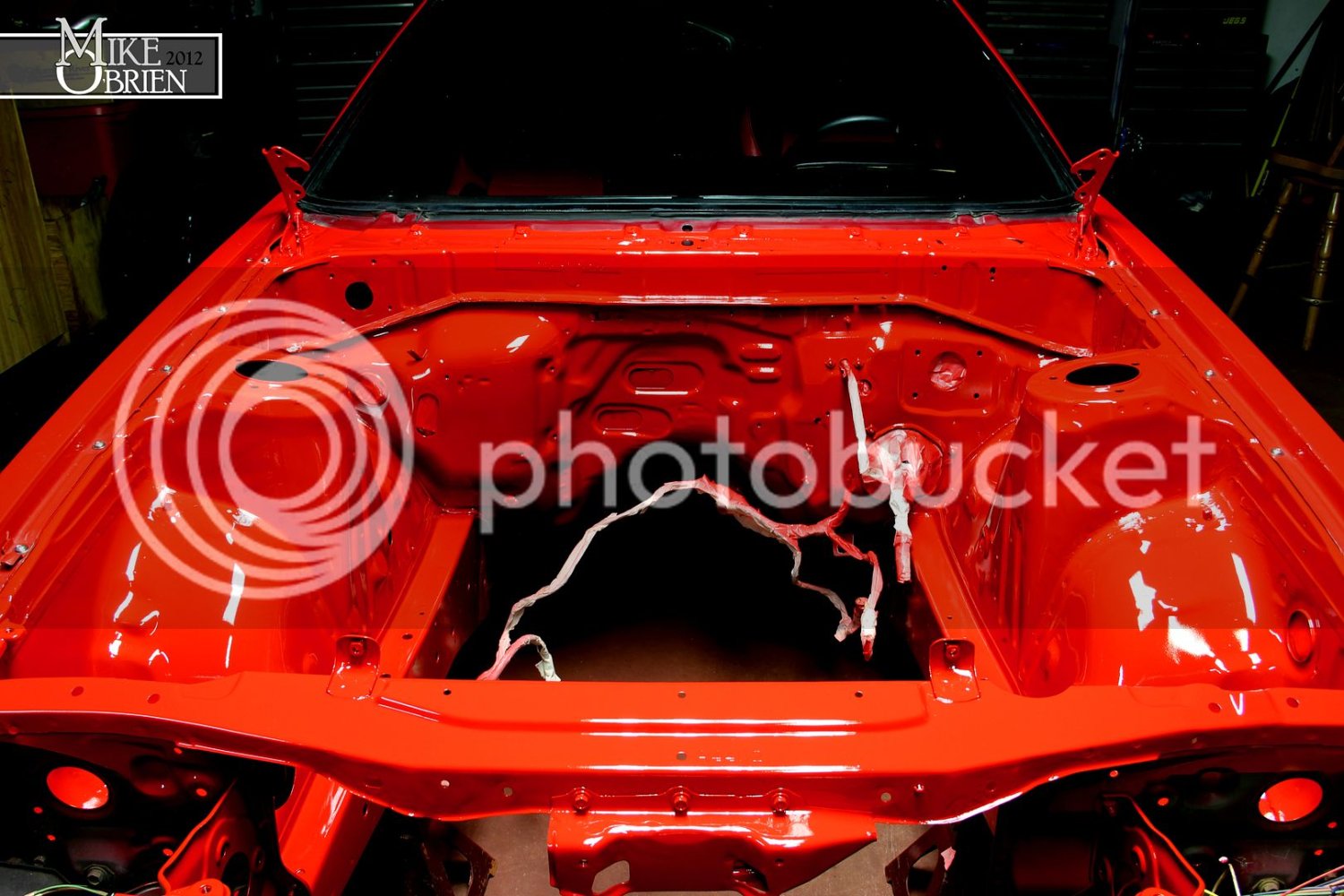
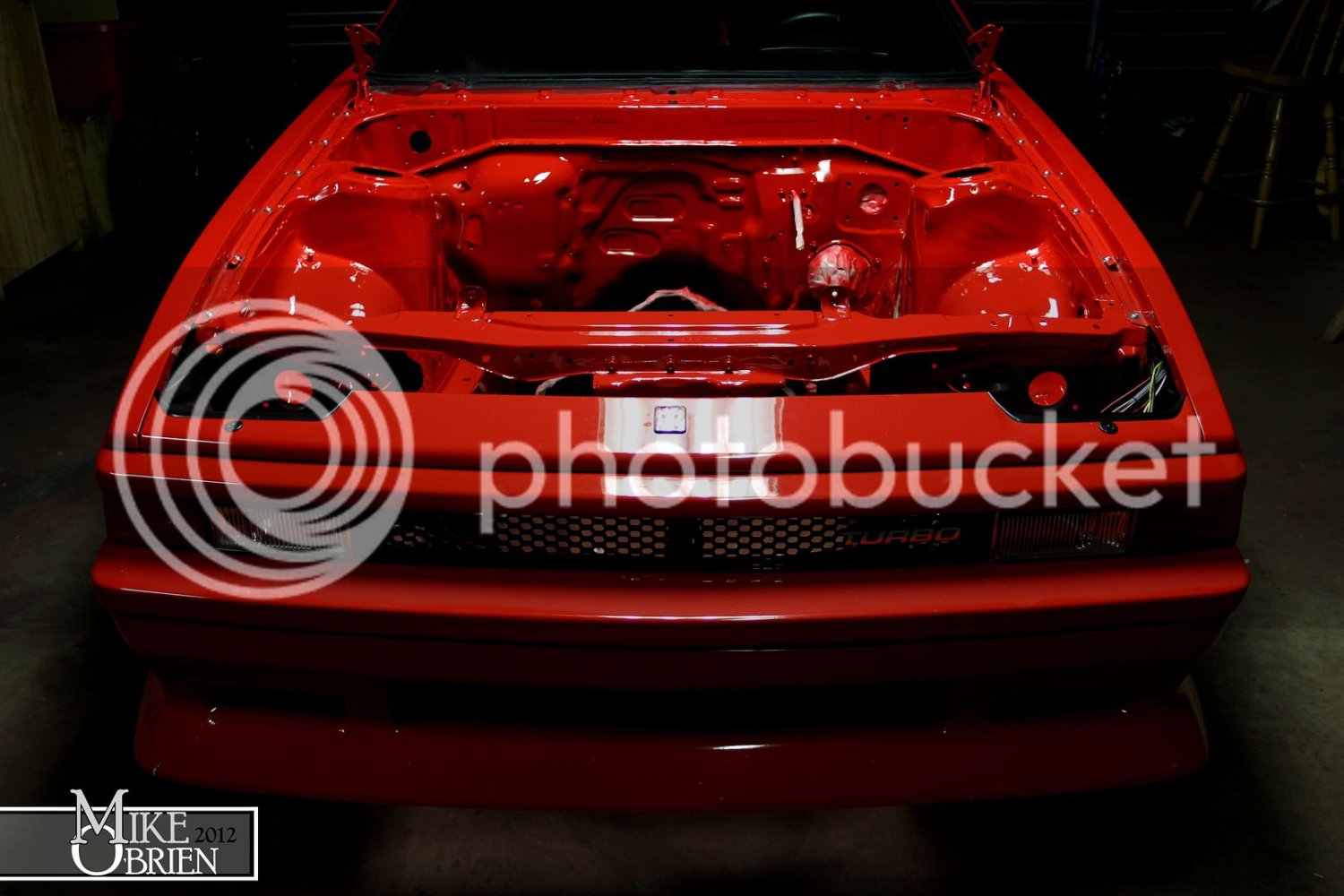
The job was not perfect by any means, but I am ecstatic over how great everything turned out for my first time painting on such a large scale. My father and my paint guy were both very impressed and happy with the results. There are no drips, and only a few small dry spot that can't be seen when the engine is installed. It's very wet and glossy where it counts, and the match to the original paint is very close even after six years.
The engine bay was slowly reassembled with permanent installs of the other components.
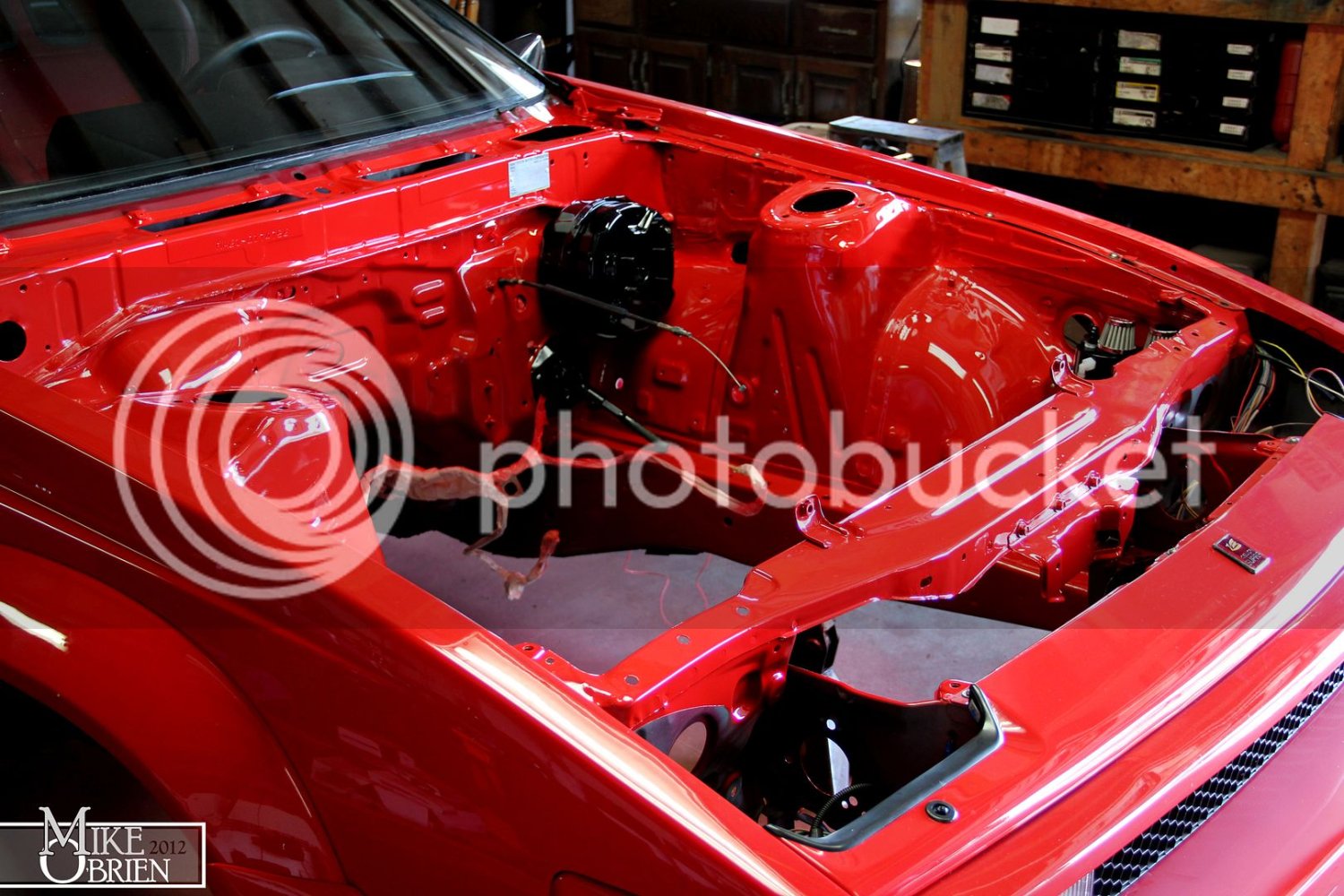
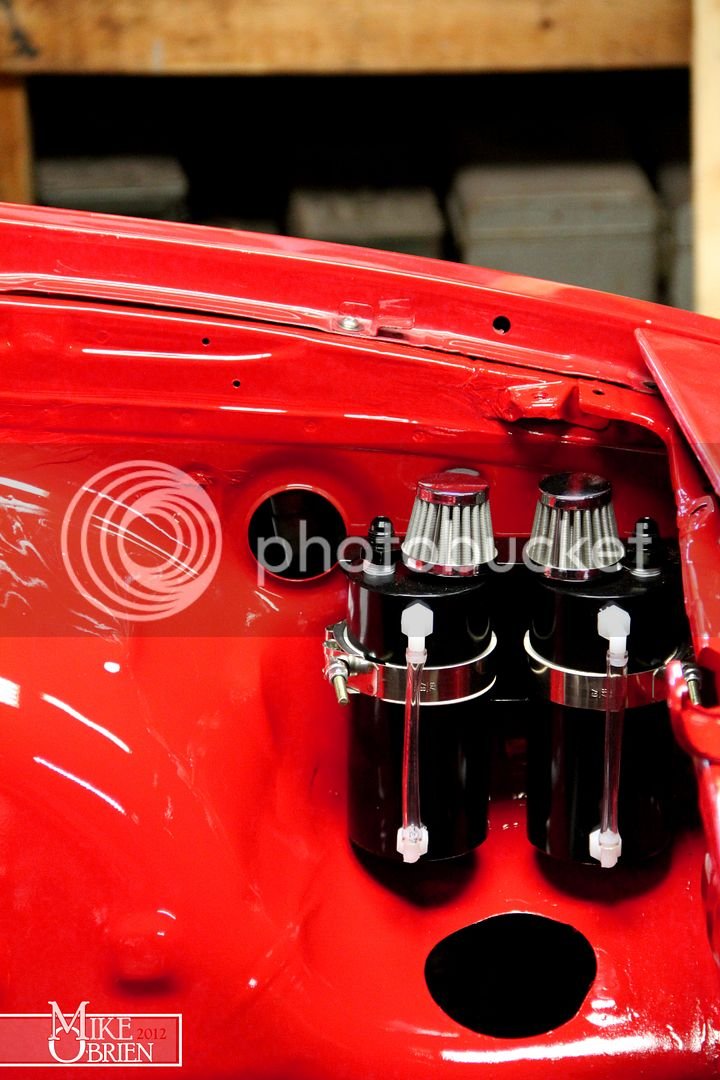
No small detail was overlooked, from the brake lines, proportioning valve, and even to the headlight motors.
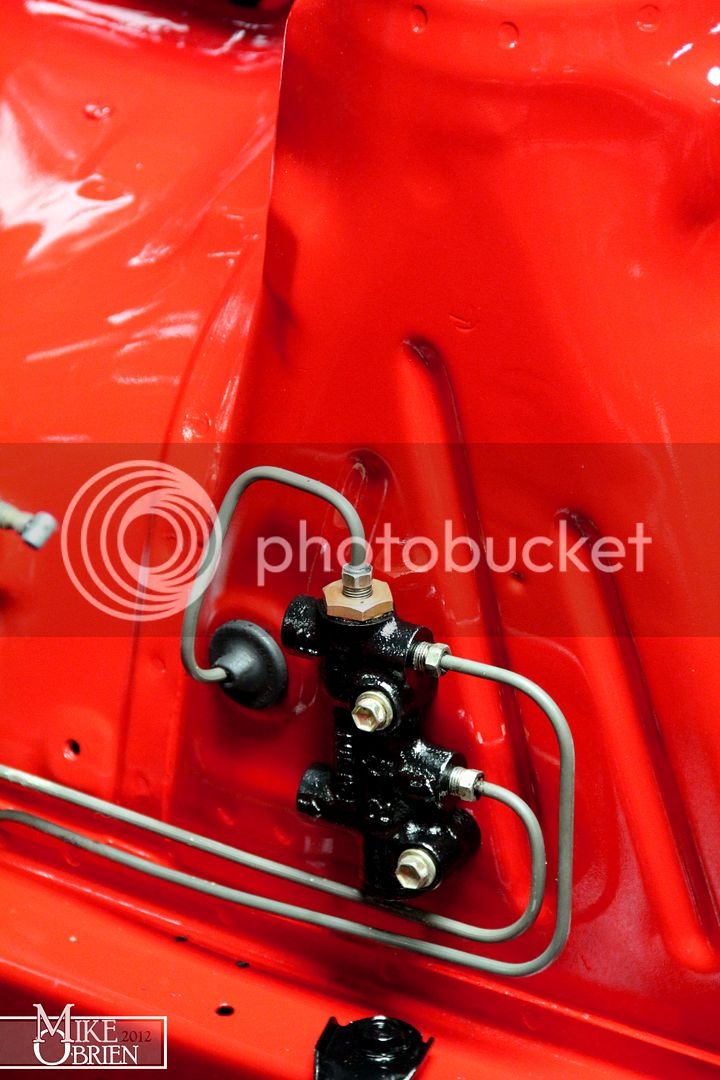
Even though I didn't have a need to, I just had to see what it was going to look like with the engine in place.
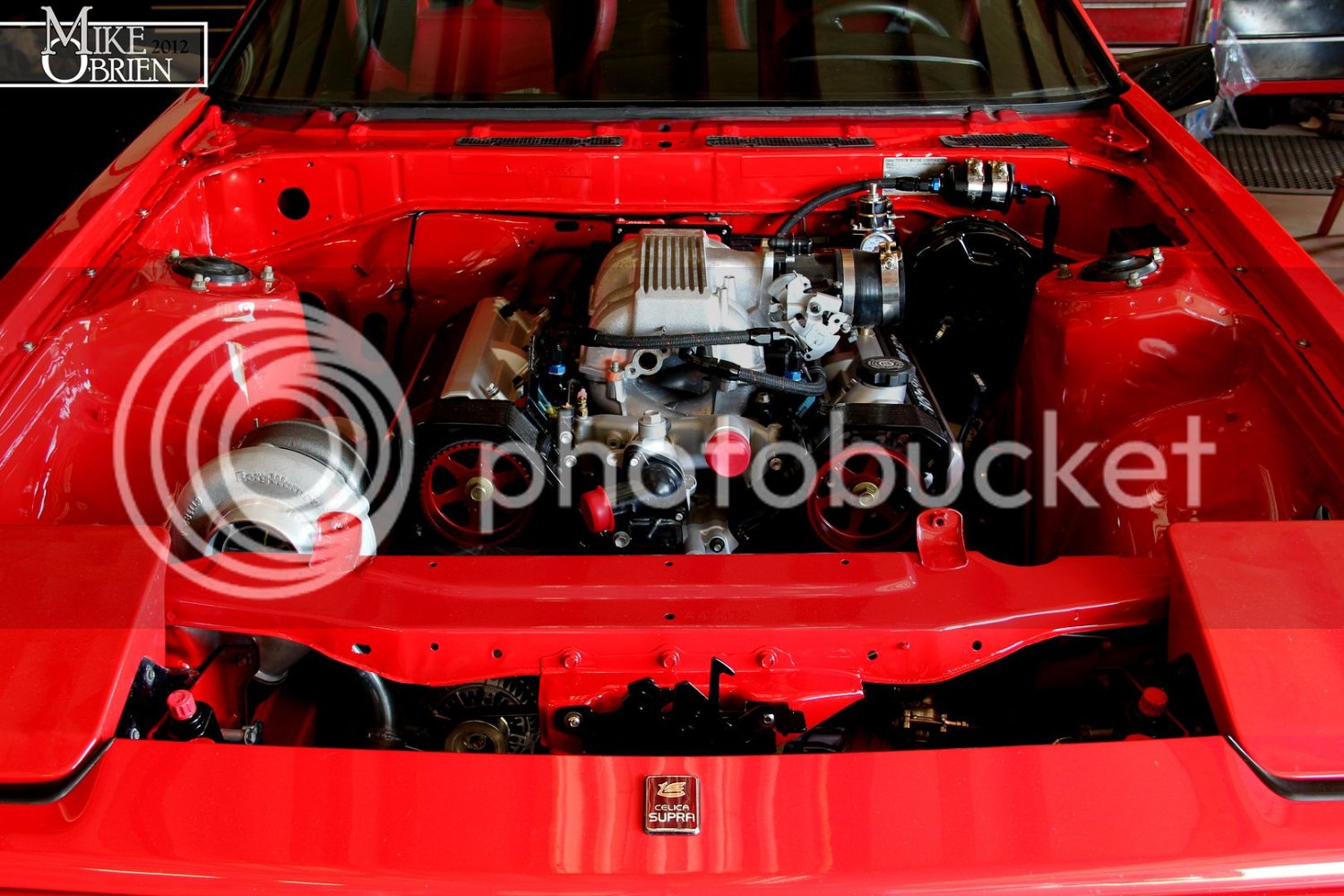
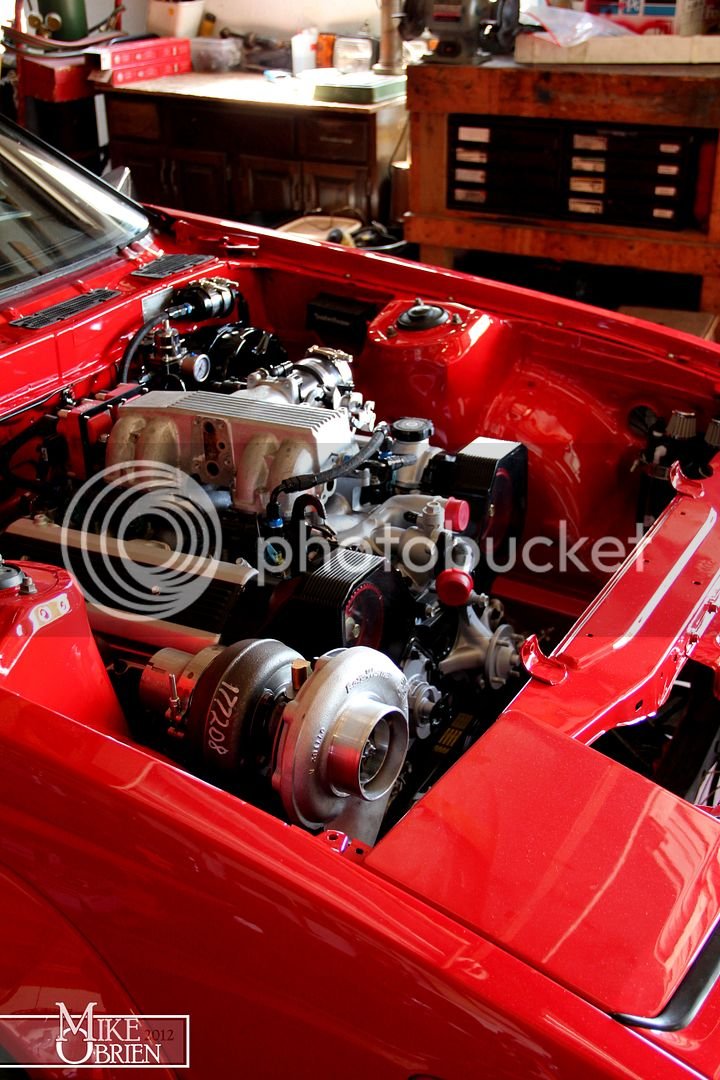
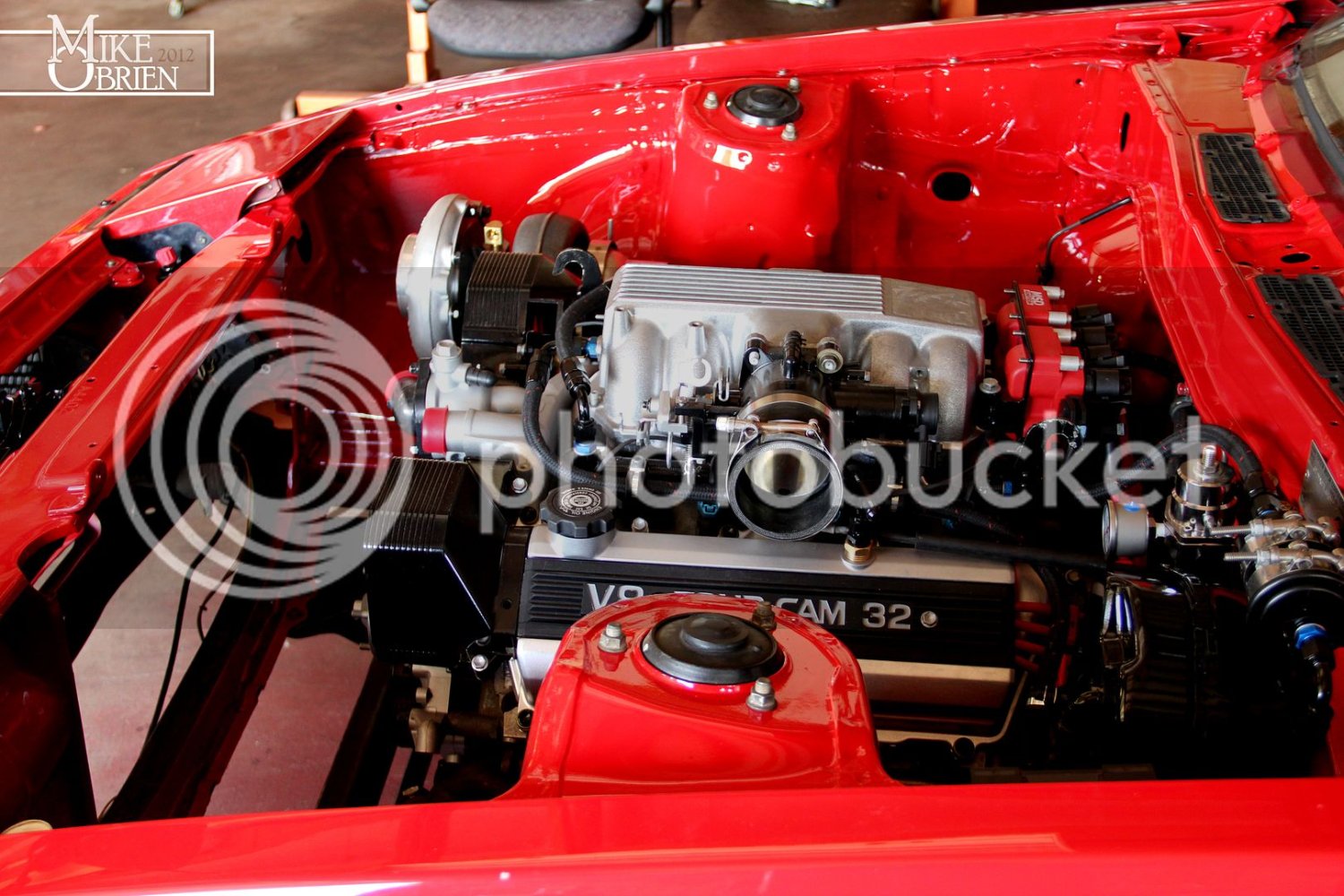
The only noticeable error with my fabrication is that I didn't account for the brake line that comes out of the top of the proportioning valve, and my intake now doesn't fit from the throttle body. A bit of massaging and it will route fine.
The lower windshield trim was in ok shape (I had repainted it many moons ago), but I decided to bring up to the standard that everything else received. Sanded down to 400 grit, it received two coats of black and two coats of clear.
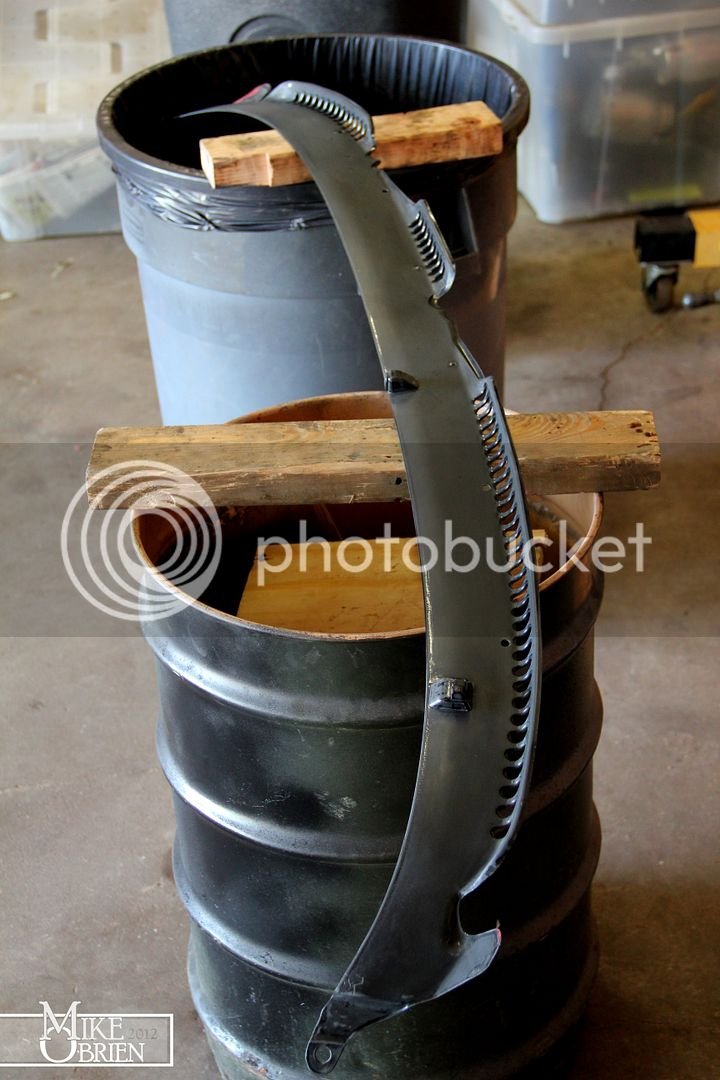
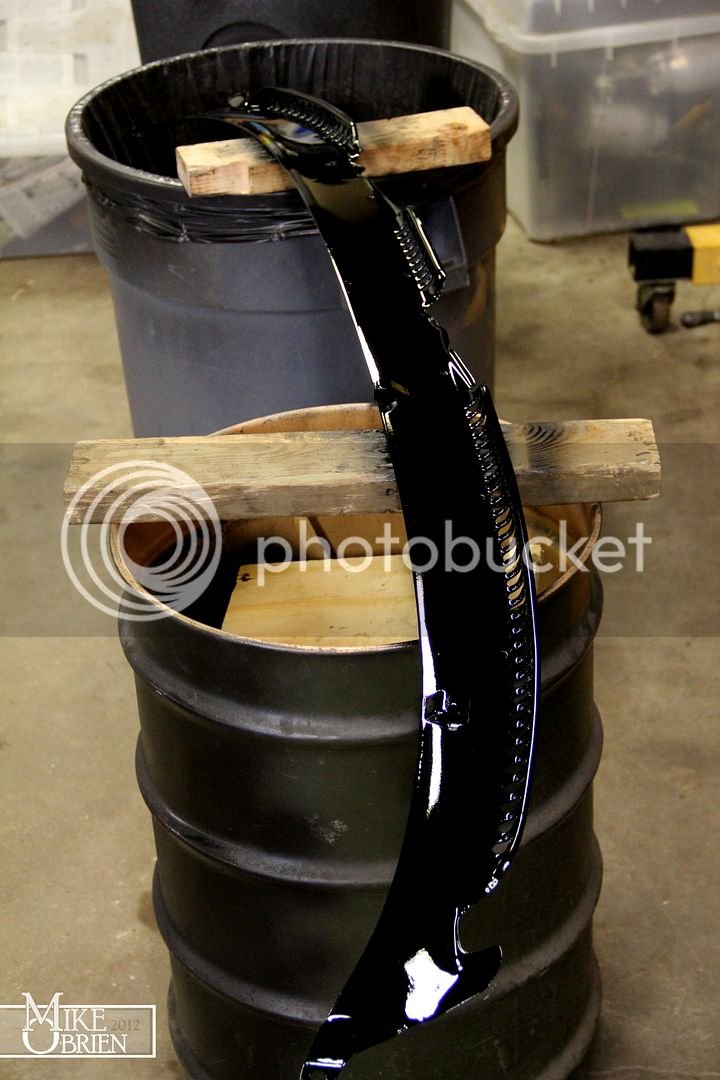
-Mike
I went to a local rodder's favorite little hole-in-the-wall paint shop to pick up a quart of PPG OMNI MAE single stage acrylic in the shade of red my car was painted way back in 2006. After some confusion and debate over which red it actually was at the paint shop, I went home with a quart of what I thought was correct. I mixed up a small sample batch using graduated cylinders, and mixed it in a shot glass to use with my airbrush on a test panel to verify the color. After the test piece dried (a 3.5" circular section left after cutting an intercooler hole), it was evident that the red I had purchased was not correct. It may be hard to tell in the photos, but in natural light it is way too dark of a red. I am comparing it to a headlight door in the following picture:

I went back to the shop, and finally was able to confirm with my body guy the exact shade of red I needed with the exact PPG number. Volkswagon LP3G Flash Red (1996) was the correct variant, and the match is great with my six year old body paint.
The test pieces would be the hood hinges as I sprayed them in color before seam sealing them back to the car. I again mixed a small batch and used my airbrush to cover every small crevice of the hinges with multiple coats.




Very happy with the match, the engine bay was checked to make sure everything was prepped correctly, and pushed outside for a thorough cleaning.


The hinges were reassembled to the car with new seam sealer around their base just like from the factory.

While the car was outside, the entire garage was swept and dusted entirely, while the compressor was evacuated and the drain removed overnight. The next day, the engine bay was thoroughly checked and wiped down with prep cleaner.

The entire car was masked to make sure no overspray crept its way onto any other part of the car. After a wipe down with a tack rag, I was ready to shoot my first coat of paint by myself with an HLVP gun. Using only half of the quart of paint, I was able to lay down three nice coats within ten minute windows as per the instructions. The mix requires a ratio of paint, reducer and hardener of 8:1:1 respectively.




Needless to say, I was very happy with the results.




The job was not perfect by any means, but I am ecstatic over how great everything turned out for my first time painting on such a large scale. My father and my paint guy were both very impressed and happy with the results. There are no drips, and only a few small dry spot that can't be seen when the engine is installed. It's very wet and glossy where it counts, and the match to the original paint is very close even after six years.
The engine bay was slowly reassembled with permanent installs of the other components.


No small detail was overlooked, from the brake lines, proportioning valve, and even to the headlight motors.

Even though I didn't have a need to, I just had to see what it was going to look like with the engine in place.



The only noticeable error with my fabrication is that I didn't account for the brake line that comes out of the top of the proportioning valve, and my intake now doesn't fit from the throttle body. A bit of massaging and it will route fine.
The lower windshield trim was in ok shape (I had repainted it many moons ago), but I decided to bring up to the standard that everything else received. Sanded down to 400 grit, it received two coats of black and two coats of clear.


-Mike
Last edited:

